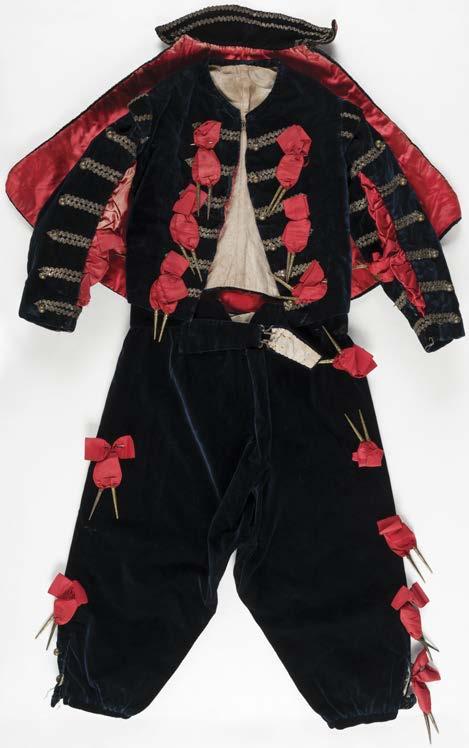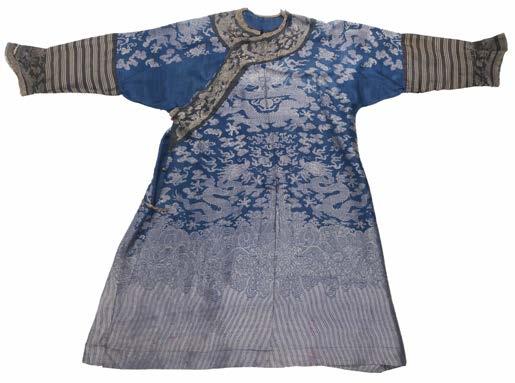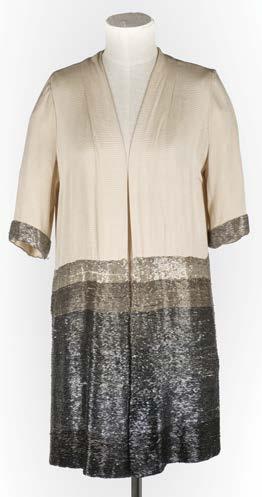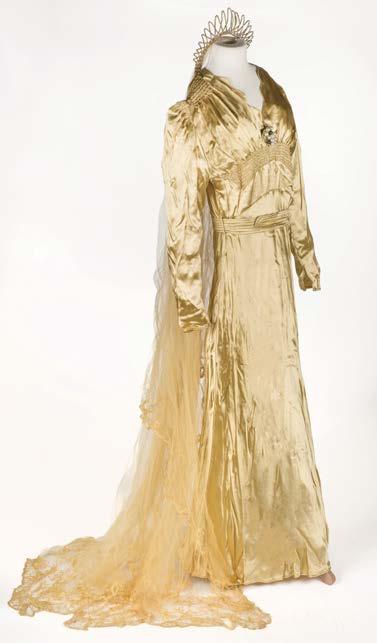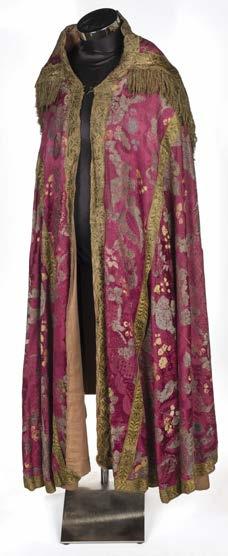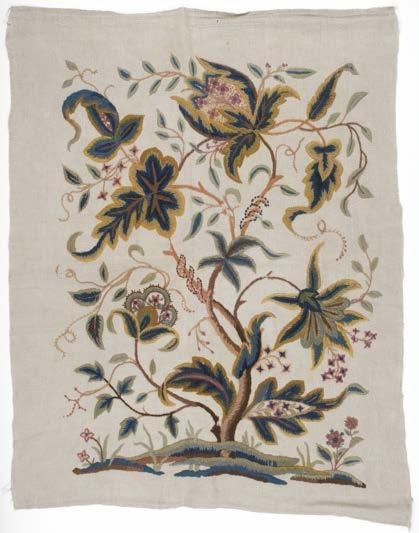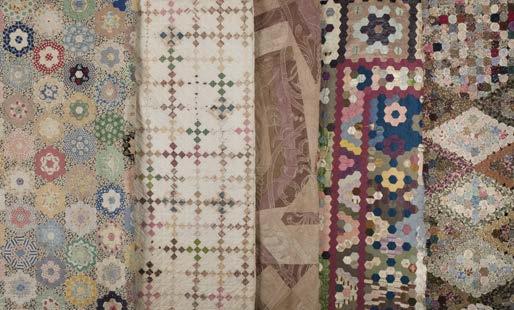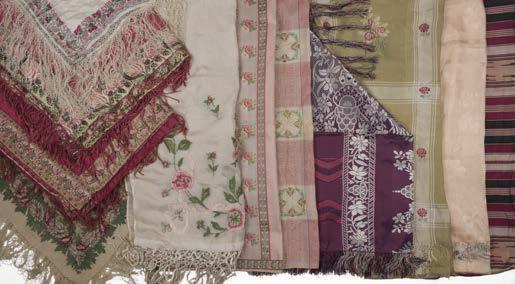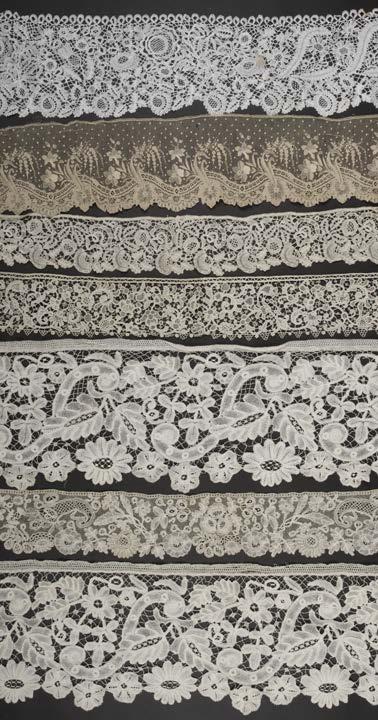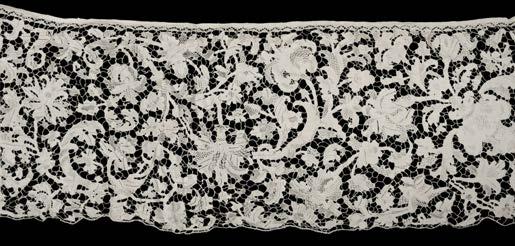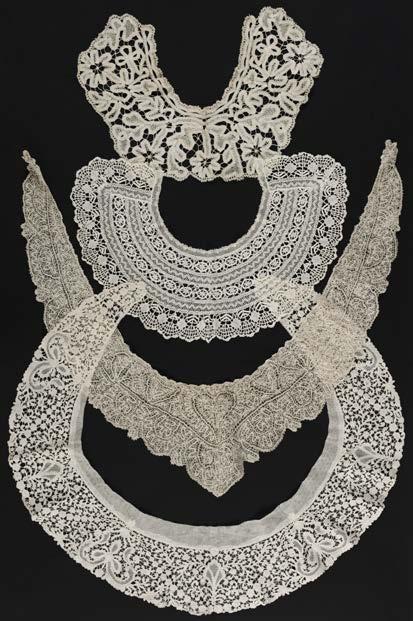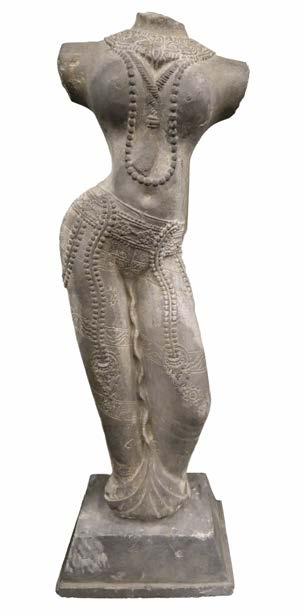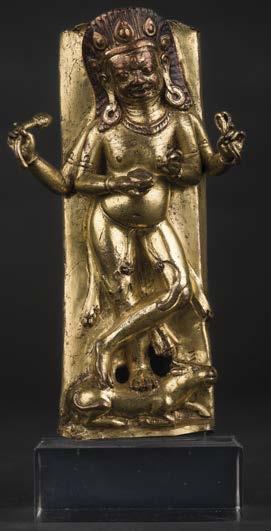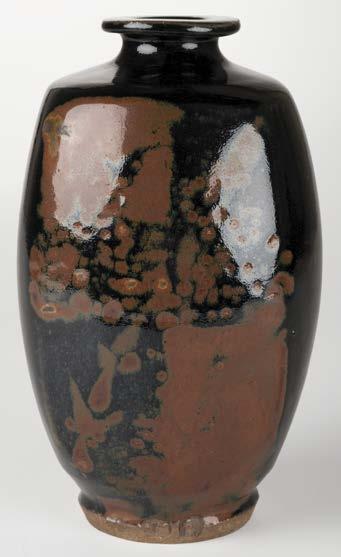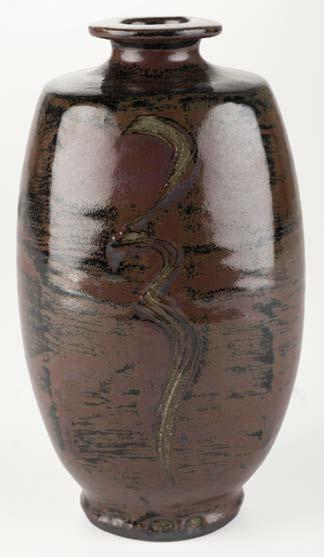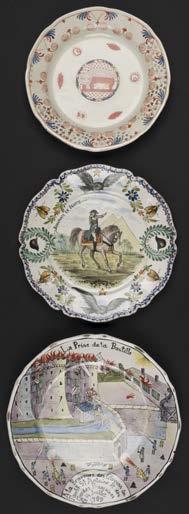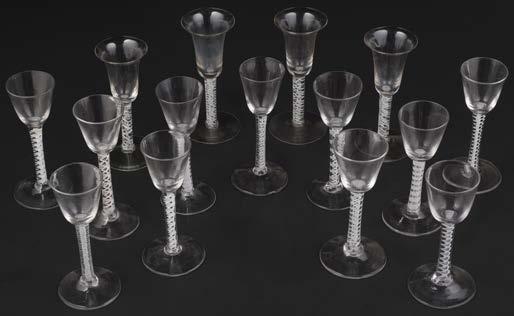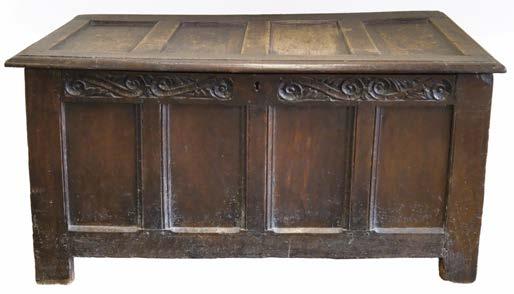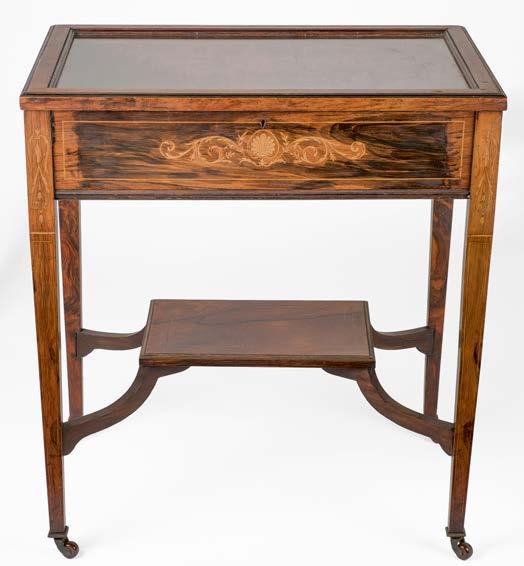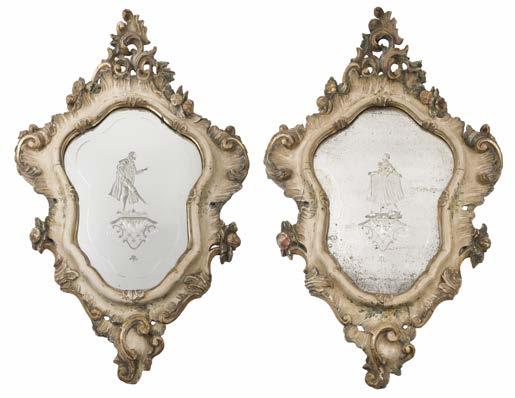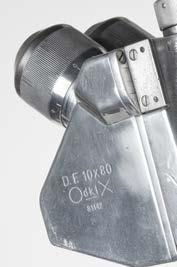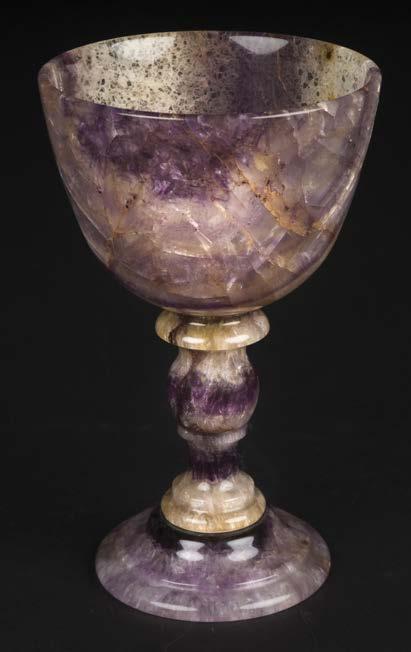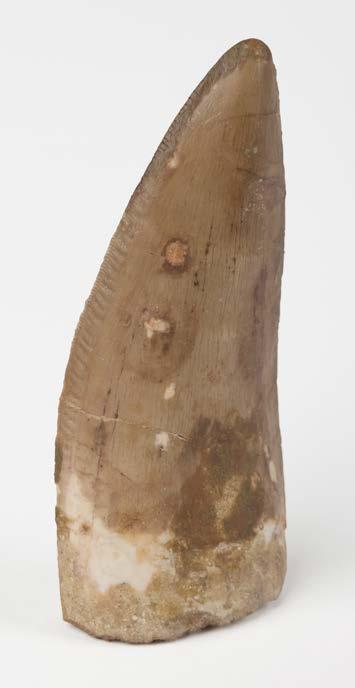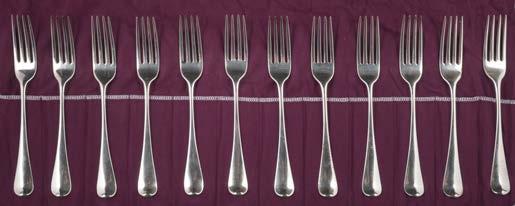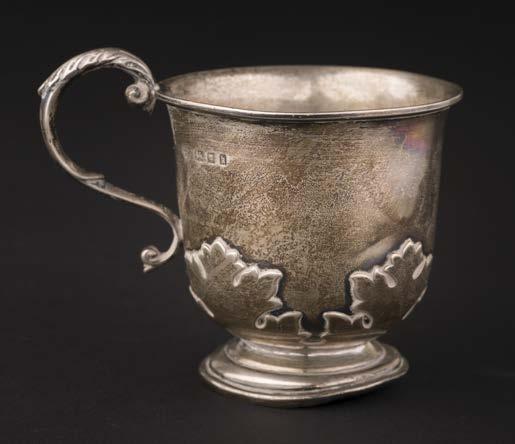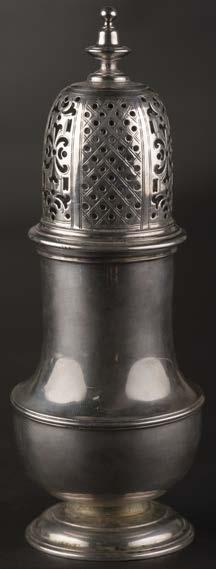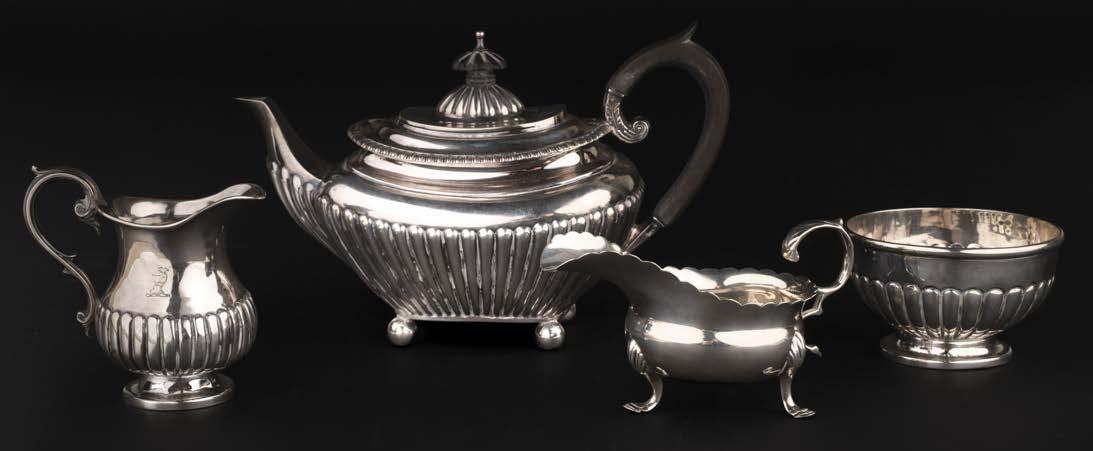IMPORTANT SALE INFORMATION
CONDITION REPORTS
Condition reports now including video conferencing can be requested in the following ways: T: +44 (0)1285 860006 | E: info@dominicwinter.co.uk
Via the relevant lot page on our website www.dominicwinter.co.uk
ARTIST'S RESALE RIGHT LAW ("DROIT DE SUITE")
Lots marked with AR next to the lot number may be subject to Droit de Suite. Droit de Suite is payable on the hammer price of any artwork sold in the lifetime of the artist, or within 70 years of the artist's death. The buyer agrees to pay Dominic Winter Auctioneers Ltd. an amount equal to the resale royalty and we will pay such amount to the artist's collecting agent. Resale royalty applies where the Hammer price is 1,000 Euros or more and the amount cannot be more than 12,500 Euros per lot.
The amount is calculated as follows: Royalty For the Portion of the Hammer Price (in Euros)
4.00% up to 50,000
3.00% between 50,000.01 and 200,000
1.00% between 200,000.01 and 350,000
0.50% between 350,000.01 and 500,000
Invoices will, as usual, be issued in Pounds Sterling. For the purposes of calculating the resale royalty the Pounds Sterling/Euro rate of exchange will be the European Central Bank reference rate on the day of the sale.
Please refer to the DACS website www.dacs.org.uk and the Artists’ Collecting Society website www.artistscollectingsociety.org for further details.
For payment arrangements please refer to information for buyers at rear of this catalogue. We would kindly request that commission bids are submitted by 9.30am on the morning of sale.
BIDDING
Customers may submit commission bids or request to bid by telephone in the following ways: T: +44 (0)1285 860006. |. E: info@dominicwinter.co.uk
Via the relevant lot page on our website www.dominicwinter.co.uk
Live online bidding is available on our website www.dominicwinter.co.uk (surcharge of 3% + vat): a live bidding button will appear 30 minutes before the sale commences. Bidding is also available at the-saleroom.com (surcharge of 4.95% + vat) and invaluable.com (surcharge of 3% + vat).
POST-SALE
For payment information see our Information for Buyers page at the rear of this catalogue. For details regarding storage, collection, and delivery please see our Information for Buyers page or contact our office for advice. Successful bidders will not incur storage fees while current government restrictions remain in place.
EXPORT OF GOODS
If you intend to export goods you must find out in advance if:
a. there is a prohibition on exporting goods of that character e.g. if the goods contain prohibited materials such as ivory.
b. if they require an Export Licence on the grounds of exceeding a specific age and/or monetary value threshold as set by the Export Licensing Unit. We are happy to offer the submission of necessary applications on behalf of our buyers but we will charge for this service to cover the costs of our time. The typical cost of an application is £50 + VAT, but this price cannot be guaranteed or fixed.
c. CITES permits: These documents may be required to ship some lots (e.g. ivory) out of the UK. Your shipper (DHL Express or other) can advise and apply for these on your behalf. It is the buyer's responsibility to ensure that the shipment is lawfully exported out of the selling location and can be lawfully imported to the country of destination.
All lots are offered subject to the Conditions of Sale and Business printed at the back of this catalogue. For full terms and conditions of sale please see our website or contact the auction office. A buyer’s premium of 22% of the hammer price is payable by the buyers of all lots, except those marked with an asterisk, in which case the buyer’s premium is 26.4%.
CONTENTS
Antiques & Historic Textiles
Henry Meadows BA Hons, MRICS
Mark Glew
Winters MA (History of Art)
Cover illustrations: Front cover: lot 207 | Back cover: lot 207
Catalogue Produced by Jamm Design Ltd. - 020 7459 4749 info@jammdesign.co.uk
Photography by Darren Ball - 07593 024858 darrenball1989@gmail.com
Susanna
Henry Meadows
Susanna Winters
Mark Glew
To commence at 10am


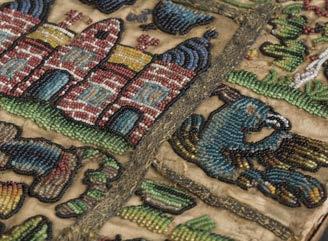
447* Beadwork Panel. A rare Charles II beadwork panel, English, circa 1660-1680, embroidered in polychrome Venetian seed beads, and a few spangles, on a dark cream silk ground, with a lady in the centre with embroidered padded silk satin face and curly hair worked in unspun silk using french knots and couching, wearing a blue gown with a yellow, orange, and black stole around her shoulders, flanked by two large flower stems below a pair of buildings with domed round towers, an anthropomorphic sun appearing through clouds between the buildings, and with other motifs scattered around, including flowers, butterflies, acorns, and a snail, within a frame of metallic gold woven braid, and a beadwork border composed of a plethora of flora and fauna: large flower stems, trees, birds (including a parrot), caterpillars, a leopard, a horse, a fish in a rock-edged pond, moths, etc., some minor loss of beadwork, female figure lacking wooden arms, silk ground beginning to fray very slightly in places, sometime tacked with thread to a double layer of linen, and attached with 9 metal tacks at edge to a piece of plywood covered in brown paper, 32.5 x 39 cm (12.75 x 15.25 ins)
This rare beadwork panel has been in the same family for over half a century; 17th century needleworks such as this are now rarely seen outside institutions. The panel has been the subject of an article: Carole Morris, ‘A rare 17th century English beadworked panel’, Bead Society of Great Britain, Journal 100, pp. 16-19 (copy supplied with this lot), and was exhibited at the Bead Society’s 20th Anniversary lecture day in Birmingham, in June 2009. Carole Morris describes seeing the panel for the first time: ‘In all the years I have studied and identified beadwork (from various periods and parts of the world) no-one had ever produced something as fabulous as this 17th century English beadworked panel, which was the best I had ever seen outside a museum like the V&A, the Fitzwilliam or the Burrell Collection in Glasgow!’
Colonial Williamsburg has in its collection a beadwork panel which is very similar to that offered here (object number 2000-333); it has a central lady with stole, buildings with domed towers, a fish beside rocks, a parrot, and a leopard, as well as floral and foliate motifs which echo those in our panel. Carole Morris notes that such motifs were often copied from printed pattern books, which provided ladies with inspiration for both threadwork and beadwork, for example, Richard Shorleyker’s A Schole-House, for the Needle, first published in 1624, A Booke of Beast, Birds, Flowers, Fruits, Flies and Wormes, published by Thomas Johnson in 1630, and Peter Stent’s Booke of Flowers, Fruits, Beastes, Birds and Flies, published in 1650.
The advantage of threadwork over beadwork is of course the retention of colour, since coloured beads do not succumb to the ravages of light in the same way as embroidery silks or other threads do. Here the silk ground has also survived remarkably well, and overall the panel is in unusually good condition. (1)
£3,000 - £5,000
449* Children’s Clothing. A hollie point lace baby bonnet, late 18th century, of fine white lawn, with crown of hollie point lace depicting star and flower motifs and 2 crowns, edged with hand-made lace, lacking one silk ribbon tie, 15 x 15 cm (6 x 6 ins), together with: 8 other bonnets, variously embroidered, tucked, lace-trimmed, several for older children or adults; 3 lace-trimmed baby shirts; an infant’s white cotton blouse with long sleeves; a pair of child’s knickerbockers with buttonhole fastenings; and a lace christening overdress, plus a lady’s white cotton combination garment, mostly in good condition, various sizes (16)
£150 - £200
448* Children’s Clothing. A child’s three-piece velvet page boy suit, 19th century, dark blue velvet suit, comprising: a jacket with crimson satin revealed through slit sleeves (one puff of satin shredding), the sleeves and front heavily embellished with metallic gold gimp braid, decorative buttons, and pairs of aiglets suspended from crimson grosgrain ribbon bows (2 to front held with pins), another 2 pairs of aiglets to lower back, some aiglets varying slightly in design, lined with linen (mildewed) and red satin (some marks in places), metal hook and eye closure at neck, chest 56 cm (22 ins), sleeves 33 cm (13 ins), length 33 cm (13 ins); a pair of cuffed trousers, with bow and aiglet decoration as before, 2 only (of 5) aiglets on left side (one held with a pin), self belt and metal buckle to rear, belt and waistband a little marked, lined with linen, waist 57 cm (22.5 ins), length 54 cm (21.25 ins); and a cape with collar (slightly rubbed at nape), edged with a double row of metallic gold braid, lined with crimson satin (faintly stained), length 37 cm (14.5 ins) (3)
£100 - £200
450* Pram. A fine Victorian pram, the wood and iron frame with a canework scroll formed crib, the hood with green padded leather and mounted on two substantial 18-spoke wheels, general wear commensurate with age and use, length 120 cm long (47 ins), height 95 cm (37.5 ins)
A wonderful piece of social history with great character. (1)
£100 - £150
451* Chinese Dragon Robe. A silk brocade nine-dragon robe, late Qing Dynasty, full-length silk robe, finely woven in polychrome on a blue ground, with long sleeves and horse-shoe cuffs, depicting 9 five-clawed dragons chasing flaming pearls, three on each side, one on each sleeve, and one on interior flap, densely surrounded by various other auspicious symbols, including cranes, clouds, and bats, etc., wide lishui border to hem woven in gold, cuffs and neck with border of symbols woven in polychrome on a black ground, edged with metallic braid, cuffs lined with patterned turquoise silk (slightly discoloured), vent to centre of front and rear, metal bauble fasteners with corresponding loops, length 132 cm (52 ins), width cuff to cuff 217 cm (85.5 ins) (1)
£700 - £1,000
453* Chinese Skirt. An embroidered skirt, late Qing Dynasty, apron skirt of figured blue silk, front and rear panels and pleats hand-embroidered with pink chrysanthemums and other flower motifs in coloured threads, some edged with metallised threads, borders trimmed with woven ribbon (some breaks and small losses along the bottom), some small areas of discolouration of blue ground, and pulled threads, wide linen waistband with ties (some faint discolouration), fully lined inside with green silk, length 95 cm (37.5 ins)
(1)
£400 - £600
452* Chinese Dragon Robe. A silk brocade nine-dragon robe, late Qing Dynasty, full-length silk robe, finely woven in silver silks on a blue ground, with long sleeves and horse-shoe cuffs, depicting 9 five-clawed dragons chasing flaming pearls, three on each side, one on each sleeve, and one on interior flap, densely surrounded by various other auspicious symbols, including clouds and bats, etc., wide lishui border to hem, cuffs and neck with border of symbols woven in gold silks on a black ground, cuffs lined with pale blue silk, vent to centre of front and rear, bauble fasteners, one replaced with a red spherical button, loops lacking or replaced, some fraying around neck and to cuffs, wear to right underarm with iron-on tape repair to interior, occasional marks, including some minor pink marks towards hem, 13 cm length of stitching becoming undone to left sleeve, length 140 cm (55 ins), width cuff to cuff 195.5 cm (77 ins), together with A large theatrical dragon robe, embroidered in polychrome silks and metallised gold threads, on an orange satin ground, with 10 five-clawed dragons, 3 on each side, and 2 on each wide sleeve, elaborately hand-embroidered between with other auspicious symbols, e.g. bats, clouds, cranes, fish, etc., lined with green silk (with several circular black ink stamps), somewhat faded and worn, length 98 cm (38.5 ins), width cuff to cuff 191 cm (75.25 ins) (2)
Each lot is subject to a Buyer’s Premium of 22% (Lots marked * 26.4% inclusive of VAT @ 20%)
£200 - £300 178
Lot 451

454* Chinese. A collection of hand-embroidered and woven items, late Qing Dynasty, comprising: a large shaped piece (a collar?), embroidered overall in coloured silks on a black satin ground, with pink and blue paeonies, other flowers, and auspicious symbols (e.g. fish, shells, etc.), border along lower (shaped) side of couched metallised gold threads (some stitching loose), and outer border of gold and dark blue brocade, upper (straight) edge with threads where previously stitched (including within embroidered area), 34.25 x 87 cm (13.25 x 35.75 ins); a cream silk panel (a sleeve?) with polychrome silk embroidered flower and butterfly motifs set at intervals, selvedge to one long edge, remainder raw, the other long edge with some brown residue (glue?), not affecting stitching, 34 x 97 cm (13.25 x 38 ins); a pair of cuffs, embroidered in polychrome silk threads on a green silk ground, depicting fruit, foliage, flowers, and bats, some slight discolouration to silk ground (mostly to blank areas top and bottom), size of embroidered area 52 x 9 cm (20.5 x 3.5 ins), overall size 107 x 18 cm (42 x 7 ins); 2 large matching portions of a figured yellow silk skirt, each with a rectangular panel densely embroidered in brilliant blue with paeonies and butterflies in polychrome threads, and with small repeated floral stems between black satin vertical stripes around the base of the skirt, partly lined with figured pink silk, upper edge of each raw, each approximately 75 x 143 cm (29.5 x 56.25 ins); 2 large cushion covers embroidered in pastel shades on dark cream silk, depicting a crane, and other exotic birds and butterflies amongst flowers and leaves, one with 4.5 cm vertical tear to lower blank margin, remains of original olive green silk edging, each approximately 61 cm (24 ins) square; and 2 large portions of (unused?) figured royal blue silk woven in polychrome and metallised gold threads with dragons and lishui, 136 x 71 cm ( 53.5 x 28 ins) and 98 x 70 cm (38.5 x 27.5 ins) Provenance: General Sir Herbert Vaughan Cox, GCB, KCMG, CSI (1860-1923), and thence by descent to his great granddaughter. General Cox was a British officer in the Indian Army. He served in China during the Boxer Rebellion (1899-1901), for which he received the China War Medal (1900), and it was during this time that he collected these pieces. (10) £300 - £500

455* Chinese. A collection of clothing and decorative items, 19th/20th century, including: a large changeable lilac silk brocade jacket, with border of flowers, birds, and insects handembroidered in poychrome silks; a pale blue silk waistcoat embroidered overall with polychrome silk threads; a blue silk robe embroidered overall in white silk threads with large flower sprays and butterflies, braid and ribbon edging frayed; a red satin theatrical dragon robe; a lady’s black silk jacket embroidered overall with beribboned floral sprays, with ‘Trade Mark Canton China’ woven label at nape; a small embroidered collar with tassels; a metallised gold thread embroidered rank badge depicting a crane, cut from a garment; a pair of appliquéd and embroidered shoes, with hand-stitched thick layered soles; a long plain red satin robe; 3 hand-embroidered decorative table mats, 2 with metallic threads; and a long blue-grey damask robe, various condition and sizes, together with 2 hakama (one blue silk, the other dark grey), and a roll of Japanese figured grey silk, tasseled to one end, width 37 cm (14.5 ins) (23)
£300 - £500
456* Chinese. An embroidered coat, early 20th century, unstructured black silk kneelength coat with long sleeves and collar, hand-embroidered overall in white silk threads, with dragons, oriental figures (one riding a stag), pagodas, trees and gardens, etc., bust 102 cm (40 ins), sleeves 59 cm (23.25 ins), length 100 cm (39.25 ins), together with an orange silk Chinese jacket and skirt elaborately hand-embroidered in polychrome silks with various floral motifs (3)
£150 - £200
457* Chinoiserie. A beaded gold lamé coat, 1920s, patterned unstructured short coat of gold lamé with round neck and long sleeves, hand-stitched overall with seed and bugle beads, faceted black stones, and sequins, forming Oriental figures and vegetal forms, some loose threads and loss of beads, slight fraying in places (mainly to left shoulder, back of neck, and cuff edges), lined with shot green dotted satin, sleeves 54 cm (21.25 ins), length 92 cm (36.25 ins) There was a great vogue for chinoiserie in fashion in the 1920s, with designers such as Jeanne Victorine Margaine-Lacroix (1868-1930), a French couturier of the early 20th century, producing loose fitting beadwork lamé garments similar to this.
(1)
£200 - £300
458* Clark (Ossie, 1942-1996). A black bouclé coat, unstructured knee-length double-breasted lined coat, with long sleeves, collar, 4 buttons, and 2 slit side pockets, woven label at nape ‘Ossie Clark London’, size 10, bust 102 cm (40 ins), sleeves 54.5 cm (21.5 ins), length 91 cm (35.75 ins), together with a figured cream velvet coat similar, with woven label ‘Rosenblum California, Custom Tailored’, with collar, side slits at hem, elbow-length sleeves, slit side pockets, 3 metal hook and eye closures, and cream lining, bust 94 cm (37 ins), sleeves 40 cm (15.75 ins), length 98 cm (38.5 ins) (2)
£150 - £200
459* Clothing. A beaded evening coat, circa 1928, unstructured knee-length coat of horizontally-ribbed ivory silk, with bands of bugle beads from waist to hem transitioning from silver to grey to black, matching silver beads to cuffs of elbow-length sleeves, some loose threads and loss of beads, slight loss of stitching to underarm seams, sleeves 37 cm (14.5 ins), length 90 cm (35.5 ins), together with 13 other garments, including: an unstructured long coat of lilac wool, with Indian hand-embroidered floral borders to cuffs, front edges, and hem; a full-length raspberry red and gold lurex evening gown, sleeveless, with sweetheart neckline, v-back, and wide chiffon tie at back; a full-length cream satin evening gown, sleeveless, with beaded bodice and detachable belt; a linen tunic, initialled in red cross-stitch ‘A R’, with (later?) floral and foliate appliqués to neckline; and a kaftan-style orange and gold lurex dress, various condition and sizes (14)

460* Clothing. A Blues & Royals Household Cavalry officer’s frock coat, early 20th century, dark blue fine wool coat, with 6 rows of black braid to either side of chest, each adorned with two toggles, and with the pointed ends hanging loose, braid-edged epaulettes with embroidered pip badges featuring 3 crowns, standing collar and sleeves embellished with soutache braid, wide braided detail to back, with a pair of toggles at waist, and terminating in 6 tassels, metal hook and eye fastenings to front, a few tiny holes, lined with black silk, partially quilted, slightly worn at nape, with some neatly stitched consolidation, but generally in very good condition, chest 85 cm (35 ins), sleeves 60 cm (23.5 ins), length 104 cm (41 ins)
Prince Harry wore the uniform of the Blues and Royals on his wedding day in 2018.
£200 - £300
(1)
£150 - £200
Lot 457 Lot 458
Lot 459
461* Clothing. A collection of children’s and other garments, late 19th/early 20th century, comprising: an early 20th century BoPeep costume consisting of a sprigged pale pink fine cotton dress with lace insertions (deconstructed, with skirt detached from bodice and top part missing), muslin bloomers with starched frills and trimmed with pink ribbon, a pink bonnet trimmed with velvet ribbon and lace, and a matching muff trimmed with a velvet flower, accompanied by a photograph of a small girl wearing the outfit; a pink wedding muff and matching hat (latter with gold stamp on lining ‘Trevillion & Clark Millinery Specialists’), both trimmed with velvet flowers, accompanied by some loose flowers matching and a photograph of the bride (wearing hat and flowers at neck, and holding muff) and groom on their wedding day in 1937 (according to label on box); a pink satin envelope bag (belonging to the aforementioned bride?), trimmed with lace and a large rosette motif made of ribbon embroidery, with sachet of flower petals sewn inside; and a pair of cream silk grosgrain Edwardian baby bootees trimmed with lace, some small holes, various condition and sizes
Provenance: Collection of designer bookbinder and illustrator Faith Shannon (1938-2018). (a small carton)
£80 - £120
462* Clothing. A gold satin wedding dress worn by Olive Mary Bankes, 1938, slim-fitting full-length gown, with scalloped v-neck held with a berry and leaf brooch of faux pearls and yellow metal leaves, long sleeves gathered and slightly padded at shoulders, shirring to shoulders and below gathered bust, and a self belt, bust 84 cm (33 ins), 60 cm (23.5 ins), sleeves 57 cm (22.5 ins), length 135 cm (53 ins), together with a matching floor-length gold net veil, with tambour work looped scalloped edging and floral corner decoration, a few small holes, the veil stitched to a sunburst tiara of gold metallic braid, height at front 7 cm (2.75 ins)
Provenance: Olive Mary Potts née Bankes (1911-1993); her son Brian Potts (1944-2025); his daughter, the current owner. Surviving in excellent condition, this very beautiful and elegant, typically 1930s, gown was worn by Olive Mary Bankes, known as Mary, when she married Frank Potts (19111975) at St Thomas’s Church in York, on 24th September 1938 (see photograph). The unsual - and somewhat daring - colour of this vibrant dress was possibly chosen by the bride because of her love of daffodils. The flower was one of her favourites, and one of the wedding cards sent to the couple featured it. Interestingly Mary’s older sister married her husband’s brother, Will.
(2)
£150 - £200
463* Clothing. A group of 14 dresses, early 20th century and later, comprising: a 1920s sleeveless lace dress, three-quarter length with scoop neck and drop waist, the bodice of metallic gold lace over blue lurex (some slight discolouration to front, and 1 or 2 repairs), the cream skirt of tiered frilled spotted net edged with satin ribbon, cream silk lining extensively perished, bust 96 cm (38 ins), length 110.5 cm (43.5 ins); a metallic gold cap-sleeved dress worn by Paola Dionisotti (with name label at nape), the lace with Egyptian motifs over purple silk lining, damaged in places, and 12 black dresses, including: a 1930s full-length black dress, with collar and triangular patch pockets encrusted with silver seed beads; 2 beaded chiffon overdresses; a sleeveless black chiffon dress with v-neck, elaborately embroidered asymmetrically with ears of wheat in metallised gold thread and flowers in coloured threads; a black lace and chiffon overdress; a drop waist satin dress with lace gores; and an unstructured long black dress with long sleeves and all-over embroidery of flower motifs in white thread, various condition and sizes (14)
£200 - £400

464* Clothing. A group of Victorian & Edwardian gentlemen’s hats, comprising: a black beaver velvet bicorn hat by Stulz, Binnie & Craggs, Clifford Street, slightly surface worn, mainly to lower edge, with strapwork metalwork band and armorial brass button over a black moiré silk rosette, between bands of matching ribbon, black ostrich feather edging, quilted black silk lining stamped with maker’s name in gilt; a naval bicorn hat of black beaver velvet, embellished with a black rosette and edged with gold metallic braid, gold cord around crown terminating in gold bullion tassels at either side, pleated cream silk lining with a band of leather around the top; 2 black beaver top hats, stamped ‘Hollingham & Bussey Tailors, Wareham’, and ‘Hilhouse & Co. Hat & Cap Makers, 11, New Bond Street, London’; 2 black silk opera hats, contained together in a red cardboard flat oval hat box (latter worn), together with various other items of clothing: a leopard fur muff and gloves; 4 further pairs of gloves (3 pairs leather); a small tutu with gold lurex bodice and pink tulle skirt; a boned yellow satin corset; and a hand-embroidered black silk apron, plus a painted Chinese parasol, 5 folding fans (3 hand-painted Japanese), and a handembroidered Chinese fan case (worn), various condition and sizes (22) £150 - £200

465* Clothing. A silk trapunto dressing gown, made by Helen Merrett, 1930s, handmade long pale blue silk dressing gown, finely worked overall with trapunto quilting in oyster pink silk thread, with a pattern of sinuous blossom stems, oyster pink silk lining with self tie, reverse of collar similarly lined, metal hook and eye fastening to front, collar toned at neck, loss of a few stitches to underarm seam and seam of collar lining, a few small brown marks (mostly to lining), but generally in very good condition, sleeves 60 cm (23.5 ins), length 132 cm (52 ins)
Provenance: Made by skilled needlewoman Helen Merrett (1894-1966); thence by descent to her granddaughters, the current owners. (1) £100 - £150
466* Crimea. A large patchwork panel, circa 1860, tumbling blocks pattern, composed of hand-stitched wool diamonds in red, blue, and navy, with plaited wool edging to match (a few areas lost), some scattered historic moth damage (largest area 11 x 7 cm), backed with linen (with some minor staining), top edge with (later?) metal curtain rings for hanging, 298.5 x 164 cm (117.5 x 64.5 ins)
Such Crimean War patchworks are scarce and have a touching history to them. They were sewn by soldiers convalescing after the War, which lasted almost two and a half years, ending in 1856 with a colossal loss of life. For soldiers who did survive, but had sustained injuries, patchwork seems to have been a popular pastime. Materials were readily at hand in the form of old uniforms; the use of these, in predominantly red, black, navy, and green, and the bold masculine designs, make these patchworks very distinctive. There must have been an abundance of such clothing which either belonged to invalided soldiers or had been recovered from the bodies of those who had fallen. Much of the clothing, having gone through the rigours of battle, was probably too damaged to mend, and so patchwork was a way of making use of the fabric whilst benefitting the men at the same time. The Royal College of Surgeons has in its collection a painting by Thomas Wood, dated 1856, of a wounded British soldier sewing patchwork. It shows Private Thomas Walker sitting in his hospital bed, recovering from surgery after a shell exploded over his head, working on a quilt composed of triangular pieces in red, black, yellow and white. Queen Victoria visited Private Walker whilst he was recuperating and he presented the finished quilt to her. Whilst such patchworks were generally used as bedcovers, tablecloths or wall hangings, some are thought to have been used as coverings for coffins.
(1)
£200 - £300
Lot 465
467* Cryséde. A 1940s jacket of Alec Walker’s ‘Cornish Farm’ fabric printed circa 1925, handmade unstructured short linen jacket, hand-blocked in yellow, green, and blue, on a cream ground, with farm buildings, trees, and gardens, with long straight sleeves, and standing collar with concealed metal press studs and decorative button, inner neck lined with 1940s patterned cotton fabrics, bust 84 cm (33 ins), sleeves 50 cm (19.75 ins), length 49.5 cm (19.5 ins)
Founded in Newlyn in 1920, Crysede produced revolutionary garments featuring Modernist prints which uniquely combined Cornish imagery with influences such as Fauvism and Vorticism. Alec Walker, the founder of the company, said that his principle was ‘to carry modern feeling ... into the fabrics themselves.’ To that end, in 1923, Walker went to Paris to meet painter Raoul Dufy with the hope of buying his textile designs. When it turned out that he couldn’t afford them, Dufy suggested Walker find inspiration from his own paintings instead. Following Dufy’s advice led to rapid expansion of the company, which became instrumental in pushing against the discreet floral dress fabrics of current fashions. Through the Jazz Age of the 1920s, Crysede rolled out a succession of striking designs characterised by bold, cheerful colours and exuberant geometric motifs. By 1926, due to the need for expansion, production moved to the Old Western pilchard-processing building in St Ives. Both in Newlyn and St Ives Crysede played a key role in the emancipation of women, training generations of young women as seamstresses and administrators, and thereby elevating them out of more menial, lower-paid jobs such as netand sail-making.
468* After Gerrit Dou (1613-1675). Scholar Sharpening His Quill, 18th century, carpet picture, depicting a gentleman in a skull cap and fur-trimmed coat, trimming the end of a quill pen whilst seated at a desk, an open book and an ink well in front of him, several small holes to lower edge, 36 x 30.5 cm (14.25 x 12 ins), framed (40 x 34.5 cm), with Christie’s old label and stencilled number ‘31250’ to stretcher, the label dated ‘2 Oct 96’ and with ‘Savonnerie - Bold’ in manuscript
Gerrit Dou’s oil on panel of this subject is believed to have been painted during his apprenticeship with Rembrandt, and is now in The Leiden Collection of 17th century Dutch art, New York (GD-104).
(1)
£500 - £800
469* Ecclesiastical Cope. A brocade cope of 18th century fabric, constructed 19th or early 20th century, heavy cloak of pieced 18th century brocade, woven with green, yellow, and blue threads, and metallised silver threads on a figured raspberry red ground, depicting large floral motifs, and swags of latticework, fabric fraying in a few areas, mainly to front panels (with some stitched repairs), gold metallic braid stitched vertically to front and around hood, latter further edged with 8 cm gold metallic bullion fringe with caterpillar accents, lined with pale orange cotton, large metal hook and loop fastening at front, length 139 cm (54.75 ins)
Possibly used as theatrical costume.
(1)
£200 - £400
£200 - £300
The design ‘Cornish Farm’, one of the earliest of the designs based on Alec Walker’s landscape sketches and paintings, had been exhibited just the year before the move to St Ives, at the Independent Gallery, Grafton Street, London. A reviewer of the exhibition wrote ‘A Cornish Farm has chimney pots and latticed windows behind which one knows they are eating sloe jam and cream.’ The design was illustrated in Frank Rutter’s article on Alec Walker, Studio magazine, 1928 (volume 85), and is featured in Charlotte Samuels, Art Deco Textiles, p. 128, plate 104. The V&A has a piece of silk block-printed with ‘Cornish Farm’ (Accession Number T.63-1979). (1)
Lot 467
Lot 468
Lot 469
470* Embroidered Apron. An English embroidered silk apron panel, late 17th/early 18th century, with asymmetric design worked in polychrome silks and silver metallised threads, on a cream silk ground, using long and short stitch, couching, bullion stitch, and stem stitch, featuring flowers in an urn, meandering floral and foliate stems, a pair of horns, and a lattice motif, some stitching later (presumably where unfinished), silk perishing in places (strengthening patch of silk on verso), some light marks (including some colour run/offset from later threads), narrow linen border to top, bottom, and right-hand side, 53 x 71 cm (21 x 28 ins), together with 3 portions of fabric, including a panel of early 19th century pieced brocade edged with red silk ribbon, somewhat soiled and worn (4)
£100 - £200
472* Embroidered Coverlet. A large crewelwork counterpane, by Madeleine Garton (1885-1970), hand-worked in polychrome wools, on a dark cream twilled cotton ground, with crewelwork appliqués in the style of 17th century needlework slips, featuring a large flower basket with moths in the centre, surrounded by floral sprays, and 2 large flower sprays to lower corners, all within a braid border, scattered water stains, lower left corner with fraying and loss, just encroaching beyond the braid border (but not affecting needlework), backed with ivory cotton (stained and with some tears and patches), fringing to sides and lower edge, 261.5 x 251.5 cm (103 x 99 ins)
Provenance: Made by Madeleine Garton née Laurence (1885-1970), who was the paternal grandmother of the owner’s late husband, and wife of Charles Leslie Garton (1885-1941). (1)
£150 - £200
£150 - £200
471* Embroidered Braces. A pair of needlework braces, early 19th century, hand-worked in petit point with silks in shades of pink and green, on a cream velvet ground, with a border of roses, leather tab with buttonhole to ends, 63 x 5.5 cm (24.75 x 2.25 ins), together with another set of braces similar, hand-worked in cross-stitch on a canvas ground, using silks in shades of green, blue, brown, yellow, and black, with Greek key pattern, edged in cream silk ribbon (perished in places), leather tab to ends as before, 65.5 x 5 (25.75 x 2 ins), matching cream velvet frames, glazed (each 79 x 30 cm) (2)
473* Embroidered Coverlet. An Arts & Crafts bedspread, early 20th century, hand-worked in wool in shades of orange and pale yellow, using stem stitch, with a wide border of large flower heads and leafy fronds, lettered ‘plaque’ at top and bottom, containing Latin text within a triple line border ‘Migraturus Habita’ (dwell as one about to depart) and ‘Post Tenebras Lux’ (light after darkness), spotting and loss of threadwork in places (notably to edges), some blue marks to one corner, knotted tassel border, 216.5 x 232.5 cm (85.25 x 91.5 ins) excluding border (1)
£150 - £200
474* Embroidered Map. A New Map of the World According to the Latest Discoveries, 1794, by Susanna Anderson, 1805, doublehemisphere world map, finely worked in blackwork on cream silk with accents of coloured silks, each hemisphere within a gilt border and titled above below a floral swag ‘Western Hemisphere or the New World’ and ‘Eastern Hemisphere or the Old World’, title in centre at head within a beribboned foliate wreath, maker’s name in centre at foot ‘Susanna Anderson in her Eleventh Year 1805’, within a gilt frame suspended by a foliate chain held with a bow, toned, silk ground perishing in places, with some losses (encroaching on left-hand title and maker’s name), 47 x 72 cm (18.5 x 28.25 ins), framed and glazed (49.5 x 75 cm)
(1)
£300 - £400
475* Embroidered Panels. Two crewelwork panels, late 19th/early 20th century, both hand-worked in polychrome wools on a linen ground, using long and short stitch, lazy daisy, stem stitch, blanket stitch, chain stitch, and french knots, with a Tree of Life design, incorporating large leaves and floral stems, both panels apparently unused, the larger panel with some small unfinished areas where pencil guide visible, 130.5 x 55 cm (51.25 x 21.75 ins) and 76 x 58.5 cm (29.75 x 23 ins), together with an Arts and Crafts style border, woven with large flowers (carnations, roses, lilies, irises, etc.), some of the flowers outlined with embroidery stitching, long edges fraying, short edges raw, 144 x 30.5 cm (56.75 x 12 ins)
(3)
£150 - £250
476* Embroidered Picture. Gloria in Excelsis Deo, early 20th century, appliquéd and embroidered, using coloured threads and metallised gold threads, on a ground of blue linen (faded), depicting the Virgin Mary holding the Christ Child, standing amongst flowers, within a frame of metallised gold threads incorporating the words ‘Gloria in Excelsis Deo’ to lower margin, some border threads loose, laid down onto board, 42 x 29 cm (16.5 x 11.5 ins), together with a group of ecclesiastical items, 19th and 20th century, some embroidered or appliquéd, comprising: 3 chasubles; one panel from a chasuble; 2 stoles; a maniple; 2 burses; and a chalice cover, various condition and sizes
(11)
£150 - £200
Lot 474
477* Embroidered Picture. A rare stumpwork collage picture of Charles I and Henrietta Maria, probably by a child, English, 2nd quarter 17th century, composed of raised work consisting of collage and embroidery, using various fabrics, lace, hair, coloured wool threads, metallised gold threads, and coloured beads, with some touches of watercolour, the threadwork using mainly bullion, satin, stem, and lazy daisy stitch, and french knots, on a pale gold silk ground, depicting a lady with a crown of pearls seated beneath a tent canopy to the left, and to the right a bearded gentleman in a cloak with lace collar, astride a plumed grey horse, a bird of prey beside him, a sundial in the centre circled by a pond with a newt, goldfish, and a snail (composed of a real snail shell, painted), with a palm tree beside, and a lion, rabbit, and squirrel below, upper part of picture with a palace flying flags atop two towers, an angel in flight carrying a leafy bough, and various other figures and symbols, including a peacock beside a small circular inset mirror, a bunch of grapes, a caterpillar, and a butterfly, lightly faded, very occasional lost or loose stitches and minor marks, 5 mm diameter hole in ground to left of canopy, 27 x 32 cm (10.75 x 12.5 ins), 19th century glazed walnut frame (32 x 36.5 cm), with old manuscript label on backboard written in sepia ink ‘Stump work picture Stewart[sic] period, bought at the Calladonian[sic] market july 1929 for £3 valued £20. frame about 100 years, K.M. Eeles’
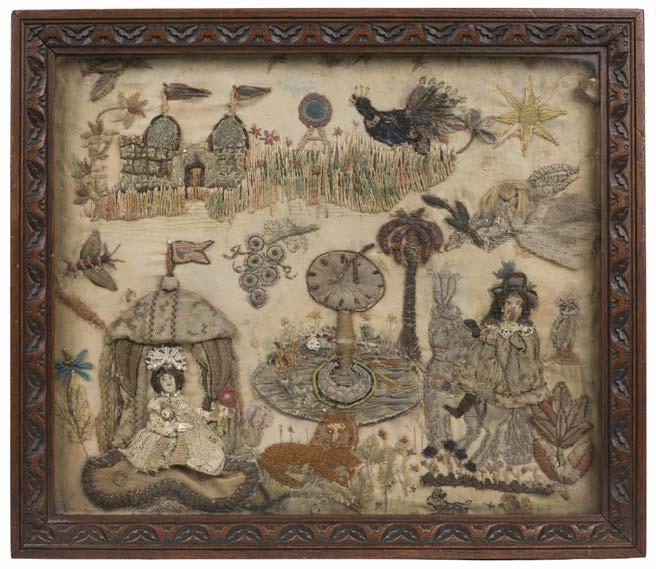
Provenance: Miss Kathleen Mary Eeles (1908-1999); thence by descent to the present owner. A charmingly naive and unusual three-dimensional needlework picture, almost certainly the hand of a juvenile. In the 17th century sewing was not only a skill all girls learnt, but in wealthier households, it developed into an art form with stumpwork embroideries and beadwork used for highly prized decorative objects such as mirror frames and caskets as well as pictures to be displayed in a frame. Although schoolgirl samplers are frequently seen, especially from the 18th century onwards, stumpwork pictures worked by young girls are much less common; this is probably due to the fact that only the upper echelons of society would have had the time and means to indulge in making such a luxury item, whereas schoolgirls from many walks of life made samplers.
The presence of a bird of prey beside Charles I is significant as the King was a keen falconer, insisting on his right to hunt on the Sabbath, despite intense pressure from the Puritans to desist on this one day of the week. Royal declarations were released supporting the right to conduct activities such as falconry and other hunting sports on Sundays. This battle was one of the many small issues which became part of the political and religious struggles which ultimately led to the King’s execution in 1649.
Bermondsey Antiques Market in London used to be known as the Caledonian Market. (1)
£1,000 - £1,500
478* Embroidered Pictures. A pair of oval needlework pictures of children, circa 1850, finely worked in silks, in shades of pink, green, brown, gold, and cream, using long and short stitch, french knots, and satin stitch, the face and limbs finely delineated in watercolour, on a silk ground, the latter just beginning to perish in a few small areas to sky, one depicting a young girl carrying a sheaf of wheat on her head and a forked branch in her hand, with a rustic dwelling and trees in the background, the other depicting a young girl wearing a knee-length dress, standing in a garden beside a wall with an urn atop, a classical temple to the left, each 23 x 16.5 cm (9 x 6.5 ins), verre eglomise mounts, matching gilt frames (33 x 27.5 cm), with typed note of provenance on verso
Provenance: Embroidered by the great grandmother of Lady (Barbara) Stewart née Lloyd; given to Lady Stewart’s brother-in-law and his wife, Sir Alastair and Lady (Patricia) Stewart, in February 1993; thence by descent to the current owners.
(2) £150 - £200




479* Embroidered Reticule. A drawstring purse or sweet bag, English, 17th century, small reticule finely worked in petit point on both sides using polychrome silks against a background of gold metallised threads, one side depicting a parrot perched in a tree growing on a grassy mound, surrounded by flowers and leaves, including tulips, roses, and clematis, the other side depicting a red squirrel surrounded by similar floral and foliate motifs, edged with gold metallised woven braid, lined with bright yellow silk, metallic twisted thread drawstring with tassels, matching tassel at foot of bag, tassels slightly frayed, occasional loose threads, but overall in excellent condition, 13 x 13 cm (5.25 x 5.25 ins), together with a small Continental bebilla purse of black knotted needle lace, both sides with appliquéd polychrome flower and leaf stems of oya lace emanating from a basket, the latter incorporating metalwork, oya lace border to top edge, metalwork tassels to drawstring and lower edge of purse, later cerise lining with pocket, 13 x 9.5 cm (5.25 x 3.75 ins)
A particularly attractive and well-preserved example of an early embroidered reticule, the colours still bright, and the silk lining intact. The term ‘sweete bag’ was used in inventories in the 16th and 17th centuries to describe such a receptacle, usually embroidered, which could be filled with dried flowers, aromatic herbs, or scented powder, and thereby used to perfume clothing or stored linens, as well as deter moths and other insects. It is thought that such bags might also have been carried by ladies and used in the same way as a pomander, to ward off infection and unpleasant odours. These meticulouslystitched items of needlework also appear sometimes to have been used to carry small objects such as a pair of gloves, a handkerchief, an almanac, or a small Bible or Book of Prayer, or as gift bags for items such as gold coins. Sometimes a matching pincushion is attached, suggesting the bag was used to contain sewing tools.
(2)
£500 - £800
480* Embroidered Runner. A metalwork and appliqué runner, Italian or Spanish, 17th century, worked in cream and red appliqués on a green silk ground (ground faded and shredded), with a repeating wavy pattern of scrolling volutes emanating from a stylised tulip, between a border of smaller scrolling volutes, the appliqués (with some losses) outlined with couched gold metallised threads, lined with bright pink silk, lining with one small mark (offset from a circular label), gold metallised braid border all round and 8 cm fringing to shor t ends, 23 x 157.5 cm (9 x 62 ins) excluding fringe, together with another runner, of 18th century silk brocade, patterned in silver metalised threads on a blue ground, 1 or 2 small areas of slight wear, 1 x 2 cm mark with remains of a silver deposit, showing through to gold silk lining (latter with some other minor marks and a small hole), metallised braid edging and fringing as before, 22 x 100.5 cm (8.75 x 39.5 ins) excluding fringe (2)
£200 - £300
481* Embroidered. A portion of a needlework bed hanging, early 18th century, pieced panel, hand-embroidered with hand-spun colour silk threads on a handwoven fine linen ground, using stem, buttonhole, and satin stitch, with all-over pattern of sinuous flower and leaf stems, including lilies and carnations, right-hand edge cut just beyond original hem, remaining edges with later hemming, worn, with losses to threadwork, holes in ground, and some darns, typed label stitched to one corner ‘EmbroideryPart of a Bed Hanging. Queen Anne Period 1702-1714. Hand woven linen and hand spun silk threads. Natural dyes’, 89 x 68 cm (35 x 26.75 ins), together with:
482* Embroidery. A large panel, possibly part of a Robe à la Française, British, circa 1730-50, embroidered in metallised silver threads with a sinuous ribbon design forming a lattice, the ribbons edged with tiny silver spangles, entwined with flowers and leaves, and enclosing large floral posies, all worked in coloured silks in shades of pink, blue, yellow, and green, on a cream silk ground, the panel composed of 4 pieces hand-stitched together (embroidery not continuous), toned and worn, with ground perishing and seams splitting (threadwork mostly extant), sometime backed with linen (machinestitched), 260 x 81 cm (102.5 x 32 ins)

A square needlework panel, probably late 18th century, embroidered overall in cream silk threads on a white fine linen ground, using satin, herringbone, stem, buttonhole, and back stitch, with meandering floral and foliate stems, border of interconnecting lobed quatrefoils incorporating small flower motifs, backed with fine linen, some losses to threadwork (revealing pencil guide), scattered small holes and marks, 110 x 106.5 cm (43.25 x 42 ins), plus other embroidered items, 18th century and later, including: a late 18th century small oval embroidery in polychrome silks on wove paper, of a pastoral scene depicting two figures with crooks (one with wings), sheep, and a wolf, framed by a tree and flower stems, with a bird, and the edge of a sunburst above, dusty and worn, backed with laid paper, 18 x 20 cm (7.25 x 8 ins); a portion of fine linen stitched overall in gold silk thread with bold scrolling flower and leaf design, some damp-staining and fox spots; a piece of finely-worked polychrome flower embroidery, tripezium-shaped (presumably sometime used as a chair seat cover), marked, smallest extremities 35.5 x 36 cm (14 x 14.25 ins), mounted, dated 1740 in a modern hand on reverse of mount; and 2 small matching fragments of linen stitched with strawberries and golden fronds, in coloured silk and chenille threads, some wear, one piece toned, various condition and sizes (17)
£200 - £300
Provenance: Private Collection, Derbyshire. Most likely a rare survival from one of the wideskirted gowns of the second quarter of the 18th century which were worn with a pannier support beneath. The voluminosity of the gown would accentuate the small waist of the wearer, whilst the large expanse of costly material would indicate the wealth and status of the lady (as the 18th century wore on skirts expanded in width so that by the middle of the century some ladies wore panniers seven feet wide). This fabric would undoubtedly have been worn by someone of considerable social standing, its silver threadwork and spangles designed to shimmer by candlelight and impress. (1)
£150 - £200

483* Fabric. A group of red damask fabric pieces, 18th and 19th century, comprising small fragments and larger pieces in varying patterns and shades of red and pink, including: a large lined and interlined door curtain, with design of large roses and other flowers, beginning to perish slightly in a few small places (mostly to side edges), twisted cord edging, rufflette tape to top edge, 33 cm turned under at bottom edge to shorten curtain, drop 232.5 cm (91.5 cm), width 138.5 cm (54.5 ins); a length of fabric patterned with large coronet and fleuron motif, with vertical machine-stitched join to centre (right-hand side longer than left), selvedge to sides, top and bottom ends raw, a few small marks, 147.5 / 193 x 109.5 cm (58 / 76 x 43 ins); a panel patterned with poppy flowers and seedheads, with cloth ties to 3 edges, with vertical machine-stitched join to centre, selvedges to sides, top and bottom hemmed by machine, 25.5 cm tear near bottom end, but otherwise in good condition, 236 x 102 cm (93 x 40.25 ins); and 2 pairs of matching curtains, one pair lined, some pieced, worn, drop varying but all approximately 157.5 cm (62 ins), width of one pair 76 cm (30 ins) and the other 152.5 cm (60 ins), together with 2 large lengths of early crimson silk satin, worn (a carton)
£200 - £400
484* Fabric. A large cloth of 18th century green damask, handstitched pieced green damask cloth, with large pattern of flowers and leaves, edged with narrow green and metallic gold fringing, backed with coarse linen, occasional small light marks, 170 x 172.5 cm (67 x 68 ins), together with 14 other small fragments and larger pieces of green damask, mostly 18th century, including a large pieced furniture cover (for an ottoman or similar?), and several small cloths with metallic braid edging (one of gaufrage velvet), various condition and sizes (15)
£200 - £300

485* Fabric. A length of French brocade, 18th century, woven in salmon pink, yellow, and lime green, with a pattern of large stylised flower motifs, on a green diapered ground, with selvedges to sides and raw edges top and bottom (pressed over), some very light discolouration in a couple of places, 108.5 x 56 cm (42.75 x 22 ins), together with: a similarly-patterned pieced portion (with 2 handsewn vertical joins, and one horizontal join from left-hand edge to first vertical join), woven in terracotta, green, blue, yellow, and brown, on a figured cream ground, side and bottom edges with remains of tacking stitches, top edge raw, 59.5 x 134.5 cm (23.5 x 53 ins); a cloth of silver, woven with pink, blue, red, and green threads, and gold metallised threads, on a silver metallised ground, with a pattern of sinuous flower and leaf stems, silver metallised braid edging (wider to one side), backed with cream silk (perishing in places), 52 x 58 cm (20.5 x 22.75 ins); two matching pieces of damask, woven in lime green with a pattern of curving fronds and flowers, on a cream ground, larger portion pieced by hand from several small and larger fragments, somewhat dusty and spotted, scattered tiny holes (mainly to larger piece), 133 x 68 cm (52.25 x 26.75 ins) and 39 x 104 cm (15.25 x 42 ins); and 2 matching pieces of hand-embroidered silk, probably Chinese, 19th century, worked in yellow silk thread using long and short stitch, satin stitch, and stem stitch, with an all-over pattern of sinuous flower and leaf stems, with trailing tendrils, including roses and convolvulus, remains of pale quilting threads, occasional light marks, one portion pieced by hand from 2 small and 2 larger pieces, the other with 37 cm tear in left-hand side, 2 x 18 cm repair near top edge, and a very small hole, 122 x 68 cm (48 x 26.75 ins) and 61 x 130 cm (24 x 51.25 ins) (7) £300 - £500

486* Fabric. A piece of French silk brocade, Lyon, late 18th/early 19th century, woven in shades of pink, yellow, green, and brown, and including gold metallised threads, patterned with a large flower urn within scrolling volutes and acorn branches, selvedge to left-hand side, remaining edges raw, 91 x 63 cm (35.75 x 24.75 ins), together with a matching small tasselled tablecloth in poor condition, plus other items, including: a piece of French pink and yellow damask furnishing fabric, with old Sotheby’s label attached, 78 x 129 cm (30.75 x 50.75 ins); a piece of 18th century dress silk brocade (Spitalsfield/Macclesfield?), woven with flower sprays in red, cream, green, and yellow, against vertical triple stripes of silver metallised threads, and with scattered six-petalled flowers in brown chenille and silver metallised threads, on a cream figured ground, backed with early linen and made into a curtain (stitching now unpicked), slightly dusty, silk perishing to left and right edges, with some losses, 158.75 x 96.5 cm (62.5 x 38 ins); a pair of early 20th century blue satin curtains from a church, each with floral border expertly hand-embroidered on cream silk in coloured silks and silver metallised threads, some spotting, wear, and lost threads, large brass curtain rings for hanging to top edge (1 lacking), each 147 x 77 cm (58 x 30.25 ins); an early 20th century full-length brocade gown from Christie’s Parham Park Sale, 13 and 14 May 1996 (with label attached), in poor and fragile condition, patterned with posies of roses between pale turquoise stripes, with elaborate ribbon-covered buttons and picot-edged turquoise ribbon trim, cream grosgrain belt sewn to boning of bodice woven with maker’s name ‘By Appointment to the Queen, Jay’s Limited, Regent St. London W’; and a hand-painted panel, with yellow wild roses in gouache on a cream silk ground, selvedges to sides, top and bottom edges raw, and design truncated to former, two very small holes, 107 x 61 cm (42 x 24 ins) (9)
£300 - £400
487* Fabric. A pieced panel of Bizarre silk, circa 1710, handstitched pieced panel, with large scale asymmetrical pattern, woven with red threads and metallised gold threads on a figured green ground, 143 x 52 cm (56.25 x 20 ins), together with a quantity of other 18th and 19th century fabric, mostly damask and brocade, some French, some probably Spitalfields, including fragments and larger pieces, some woven with metallised threads, including several panels made into small cloths, some with metallic lace or braid edging, and a blue damask tablecloth or bedcover (fringed to 3 sides, the other side raw), 190.5 x 222.25 cm (75 x 87.5 ins) and smaller, plus a square portfolio covered in silk brocade, lacking several corner tassels and closure toggles, 27.5 cm (10.75 ins) square (a small carton) £200 - £400

488* Fabric. Two 18th century matching silk brocade panels, a pair of pieced panels, woven with silver metallised threads, and pale blue and gold silk and chenille threads, depicting flowers in an urn, with pelmet and tassels above, within a scrollwork frame, some loose threads, each mounted onto a wooden frame, each 132.5 x 47.5 cm (52.25 x 18.75 ins)
Provenance: Christie’s, The Mayorcas Collection of Tapestries and Textiles, 12th February, 1999.
(2)
£200 - £300
489* Fortuny (Mariano, 1871-1949, designer). A pair of Orsini pattern cushions, 20th/21st century, 2 square cushions, Orsini cotton damask fabric to front, depicting a pinecone within a medallion, framed by acanthus leaves, one in pale sea-green and cream, the other silver-grey and cream, cream satin backs, each 49.5 x 51 cm (19.5 x 20 ins), together with 2 large and 2 smaller rectangular cushions, with Vivaldi cotton damask fabric to front in Elkhound monotones, depicting botanical festoons and feathery plumes, silvery-green velvet backs, large 40.5 x 60 cm (16 x 23.5 ins), small 30.5 x 50.5 cm (12 x 19.75 ins) (6)
£300 - £400
490* Fortuny (Mariano, 1871-1949, designer). A portion of Sfingi fabric, Italy: Venice, 1940s, printed satin-weave cotton, cream on a mottled taupe ground, with a pattern of sphinxes, flower urns, and birds, incorporating foliated scrollwork, tasselled pelmets, ribbon swags, and pendants, short (2.5 cm) pen or pencil line to ground, selvedges to left and right (with ink stamp ‘Italy [indistinct word] Venezia’, and some pencilled numbers), top and bottom edges raw, 120.5 x 147.5 cm (47.5 x 58 ins)
The Art Institute, Chicago, has a length of this fabric in its collections (Reference Number 1985.1059).
Fortuny’s website describes this design: ‘The Sphinx motif in SFINGI is a festive interpretation of French Directoire style, a transitional period between Louis XVI and Empire style popularized in post-revolutionary France. Whimsical and imaginative, SFINGI’s field is dressed with ribbons, swag, and tassels, strewn around floral urns and vases, and of course, the enigmatic Sphinx. These popular motifs from antiquity, especially Greek and Pompeian ornamentation, heavily influenced the French Directoire style.’ (1) £200 - £300

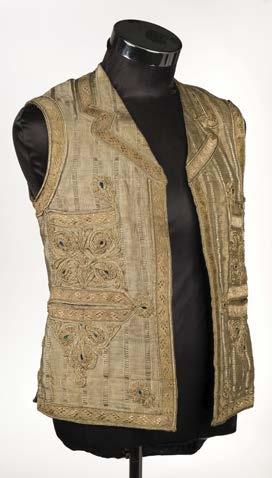
493* Indian. A gentleman’s embroidered gold waistcoat, late 19th century, waistcoat of metallised gold woven fabric, lavishly embroidered with couched metallised gold soutache braid, incorporating coloured chenille threads, and edged with metallic gold braid, two pockets to each side of front (one still sewn closed), lined with brown twilled cotton, a few small faint marks to exterior and lining, a trifle frayed at neck, a few shorts lengths of soutache becoming loose, chest 94 cm (37 ins), length 61 cm (24 ins) (1)
£150 - £200
491* Fortuny (Mariano, 1871-1949, designer). A length of unused Demedici fabric in green and silvery gold, 20th/21st century, cotton damask, patterned with large stylised floral motifs in lime green, on a silvery gold ground, width 142 cm (56.25 ins), length 116 cm (45.75 ins), together with 26 other rolls of top quality fabric, mostly velvets (including gaufrage velvet), silks, satins, and damasks, one with Métaphores label attached, all unused, various sizes (27)
£300 - £500
494* Indian. A large panel of Kutch embroidery, Gujarat, early 19th century, finely hand-embroidered in polychrome silk threads, on a ground of deep red silk, with alternating motifs of a peacock and a stylised flower posy, lower edge with bird, flower, and palmette border below a narrower scalloped tulip and leaf border, selvedges to sides, top edge with tiny stitched hem, lower edge bound in black fabric, verso of top right corner with contemporary indistinct ink manuscript (maker’s name or mark?), some loss of threads (mainly to tulip border), some marks and dust-soiling, a number of scattered small holes, most notably towards right-hand side (up to 54 cm in from edge), 61 x 233.5 cm (24 x 92 ins)
£80 - £120
492* Hat box. A fine brown leather hat box, circa 1920, the circular box with brass lock and catch, brown leather carrying handle secured by brass mounts, a plaque stamped ‘Patent Applied For’, silk lining with pockets, in excellent condition for its age, height 21.5 cm (8.5 ins), diameter 41 cm (16 ins) (1)
Featuring very similar motifs to a skirt piece in the V&A, accession number CIRC.307-1912. (1)
£200 - £300
496* Indian. An heraldic Zardozi ceremonial garland, 19th century, garland of raised goldwork, with large circular medallion depicting a simplistic version of the British royal arms, with the lion and unicorn flanking quartered arms topped by a crown, within a trefoil border, garland ‘chain’ composed of large flower motifs joined by trefoil and foliate links, expertly worked in bullion stitch and couched basketweave, incorporating spangles and red and green glass seedbeads and faceted ‘stones’, backed with yellow cotton, ends of each side terminating in plaited metallised gold braid with a pair of tinsel tassels, very occasional loose threads and tiny losses, 101.5 x 24 cm (40 x 9.5 ins)
Rare and impressive piece of decorative regalia evidently made for an important formal occasion, surviving in very good condition. See the V&A for similar garlands made in Datia, Northern India: accession number IS.1131985.
It was not uncommon for British heraldic symbols, such as the royal coat of arms, to be incorporated into Indian dress and other textiles in the 19th century, reflecting the influence of the British Raj. Such designs were particularly used on the garments and accoutrements of Indian royalty and high-ranking officials, as well as at weddings.
(1)
£100 - £200
495* Indian. A metalwork book cover, 19th century, front cover embroidered with raised metal strips, and a few coloured silk threads, incorporating spangles, with a symmetrical design of two birds perching amongst flowers, leaves, and other motifs, within a wavy line border, on a red velvet ground, the edge bound with wire, rear cover of brocade woven with a pattern of lilies, lined inside with pink silk (some staining), dimensions when closed 19.5 x 16 cm (7.75 x 6.25 ins), together with 8 other items, including 5 handembroidered items, probably all Middle Eastern (a small draw-string bag, a table runner, and 3 matching pelmets, one scallop-edged, worn), plus a heavy Moroccan wedding blanket covered with silver discs (9)
£300 - £500
497* Kilim. A woven rug, possibly Peruvian, late 19th/early 20th century, woven in coloured wools, in shades of blue, red, brown, and cream, with geometric pattern bordered by stripes at each end, fringed to short ends, a few small threadbare patches (some with old stitched repairs), 3 areas of fraying with slight loss to long sides (25 x 3 cm and 11 x 5 cm on one side, 8 x 3 cm on the other), 313 x 180 cm (123 x 71 ins)
(1)
£150 - £250
498* Kilim. A woven wool runner, probably Turkish, late 19th/early 20th century, with 2 alternating vertical bands of geometric motifs, in polychrome threads on an orange ground, a little dusty, a few small holes, interlined and backed with machine-stitched red fabric forming a 21 cm border to one short edge, backing fabric marked and worn, with losses, 316 x 89 cm (124.5 x 35 ins) (1)
£100 - £200
499* Chinese. A 19th century embroidered panel, large panel hand-embroidered overall on canvas in coloured wools (now mostly faded to brown), using padded satin stitch, long and short stitch, french knots, couching, and stem stitch, depicting a large peacock against a background of wisteria racemes and chrysanthemums, mounted on wooden poles top and bottom (pulling away slightly at top edge), 150 x 89 cm (59 x 35 ins) (1)
£100 - £200
500* Lee (Arthur H. & Sons). A collection of fabric, circa 1930s, most with woven floral patterns (one or two incorporating handstitching), but including a few plain pieces, and one piece of hand-stitched crewelwork, labelled ‘“Paul Carlin” chair back’, 72 x 140 cm (28.25 x 55 ins), some sample pieces showing different colourways, various labels, mostly in good condition (many pieces never used), including large pieces as well as irregularly-shaped small fragments, 134.5 x 129.5 cm (53 x 51 ins) and smaller, together with two matching cushions made from Arthur Lee fabric, each 51 x 51 cm (20 x 20 ins), plus a quantity of passementerie from the same period, mostly braid ver (4 cartons)
501* Openshaw (Olive, active circa 1929-1950). Fashion designs, a group of 7 drawings, pencil on paper, one with some watercolour, depicting ladies in various attitudes, wearing different fashion designs of the period, including a wedding dress, and a Japaneseinspired outfit with parasol, one drawing also showing a young girl in an outfit matching the lady, each signed in ink to lower right edge, two dated (29th May 1929, and Feb 23rd 1929), some extreme edges lightly toned, the drawing with watercolour with slight foxing (minimally affecting image), a couple of creases (one just barely affecting lower corner of an image), one with 5 mm closed edge tear, 3 with minor insect damage or adhesive tape to upper edge (not affecting images), sheet size 40.3 x 20.2 cm (16 x 8 ins) and smaller Olive Openshaw produced original book illustrations for Enid Blyton and other children’s books including natural history books, and was an accomplished print maker. She also illustrated numerous song books and miniature books. Openshaw studied art at the Manchester Municipal School of Art from 1929, so these drawings may have been produced as part of a college project, or possibly as an early attempt at finding work. (7)
£100 - £150
£700 - £1,000
Lot 498
Lot 500
502* Ottoman Embroidery. A goldwork collar and cuffs, late 19th/early 20th century, handmade bodice front with standing collar, and matching pointed cuffs, lavishly ornamented overall with couched metallised gold threads, on a cream wool ground, bodice with metalwork motif on either side enclosed in a circular frame set with 15 (of 20) small turquoise stones, matching stones on quatrefoil motif of 1 cuff (lacking on the other), buttons wrapped in interwoven metallised gold threads and set with a red seed bead (20 buttons on bodice, 3 on each cuff), all three items lined with pale blue silk, neckline with additional cream chiffon trim, bodice with 2 metal hook and eye closures (one eye lacking) and cuffs with 3 each, bodice 26.5 x 50 cm (10.5 x 19.75 ins), cuffs 11 x 10 cm (4.25 x 4 ins)
(3)
£100 - £150
503* Ottoman Embroidery. A metalwork silk panel, late 18th/early 19th century, finely embroidered on purple silk (faded), with raised metalwork and metallised threads, using padded satin stitch, bullion stitch, and stem stitch, and incorporating yellow threadwork, spangles, and faceted coloured glass, with a design of floral and foliate scrollwork, some marks to left of embroidery, occasional loose or lost threadwork and stones, some discreet repairs to needlework, silk ground with several stitched repairs (just touching threadwork in a couple of places), 42 x 61.5 cm (16.5 x 24.25 ins), framed and glazed (50 x 70 cm) (1)
£150 - £200
504* Ottoman Mihrab Surround. A large metalwork mosque door surround, 19th century, elaborately hand-embroidered overall in raised metalwork, on a ground of turquoise, raspberry, and gold silk, featuring panels of calligraphic decoration, red twilled cotton backing (soiled), later printed label sewn to backing with a number and ‘Feb 27 7/6’, metalwork fringe all round, surround worn with overall fraying and losses (some stitched consolidation), metalwork tarnished or verdigrised, 259.5 x 155 cm (102 x 61 ins)
This large and elaborate embroidery would have been hung so that it surrounded a mosque mihrab, the niche which indicates the direction of Mecca to praying worshippers. (1)
£150 - £200
505* Ottoman. A Turkish towel, 19th century, cream linen, each end hand-embroidered with four double-flower and foliage motifs in coloured and metallised threads, above a simple line border of alternating coloured and metallised thread segments, the ground with a white striped pattern, few pulled threads and some discolouration to ground, 156 x 56 cm (61.5 x 22 ins), together with another Turkish towel, cream line with faint stripes, the ends handembroidered with two large flower and leaf motifs in coloured and part-metallised threads, with hammered metal pieces, above tasselled edges (few missing), ground with some pulled threads and a couple of areas of discolouration, 145 x 41 cm (57 x 16 ins), plus 3 other Turkish towels, and 12 other Middle Eastern/Asian/Rhodian hand-embroidered textiles, including another later Turkish towel, and a pieced Suzani (17)
£200 - £400
Lot 502
Lot 504
Lot 505

506* Ottoman. A Turkish towel, 19th century, cream muslin, each end with wide polychrome and metal thread hand-embroidered border on finer cream muslin, depicting 3 stylised buildings, with floral decoration and columnar (cypress?) trees between, above a narrow floral border, the whole surmounted by a wavy border displaying small plants in blue pots, the embroidered areas embellished with pale peach edging and small knotted tassels (worn with some losses), a few small holes and areas of pulled fabric, mostly affecting blank areas, central blank section with one slightly larger hole near one edge and a few minor brown marks, 89 x 65 cm (35 x 25.5 ins), together with 2 other Turkish towels: one with embroidered ends depicting 3 buildings, each above a pond or stream, with trees to each side and floral motifs above and between, all above a continuous floral border, each end with embroidered scalloped edging (coming away at the ends with some loss), the towel somewhat stained, small hole at one end just inside scalloped edge, 95.5 x 42.5 cm (37.5 x 16.75 ins); the other with embroidered ends showing a geometric pattern with polychrome and metallic threads, and with numerous knots formed with short narrow strips of folded metal, some pale staining, a couple of small brown spots to central blank area, 105 x 38 cm (41.25 x 15 ins), plus a metalwork cloth, 46 cm (18 ins) square, and another linen item with Turkish embroidery (defective), 106 x 24 cm (41.75 x 9.5 ins) (5) £200 - £300

507* Passementerie. A collection of high quality modern upholstery trims, some Continental, including gimp braid (several with Greek key pattern), metallic cord, fringed and tasselled edgings, beaded trims (including an early 20th century hand-embroidered net trim with faux pearls and silver bugle beads), ribbon, a pair of green and metallic gold tassels each composed of 5 conjoined tassels with graduated suspension cord, etc., some bespoke, various colours, mostly unused, many wound onto original card (some with supplier’s name, e.g. Wendy A. Cushing Ltd, Houlès), together with: a small amount of lace, mainly black, including a black satin-edged curtain panel, decorated with two birds composed of jet beads, weighted at lower corners; a length of chiffon scarf fabric (with 3 pattern repeats), with yellow and gold scrollwork pattern on alternating pink and white ground; 8 small printed silk flags advertising B.D.V. Cigarettes; and 12 packets of velvet leaves, each packet with 3, 5, or 6 matching leaves, various condition and sizes (2 cartons)
£200 - £300
508* Pelmet. A country house chintz pelmet, 19th century, triple scallop-edged pelmet of 18th century glazed chintz, patterned with a botanical print, in shades of pink, green, and cream, on a light beige ground, faded, small holes along top and side edges (mostly where previously tacked), 2 x 3 cm burn mark towards upper edge, lower edge with gimp braid in pink, green, and cream, forming fleur-de-lys and scrolls at intersections of scallops, and with 9 cm beige twisted fringe, stiffened with hessian and backed with linen (latter with a couple of tears and a few stains), 60 x 227 cm (23.5 x 89.5 ins) excluding fringe, together with another pelmet of 18th century fabric, patterned with exotic birds perched on floral boughs, fringed gimp braid to lower edge, 27.5 x 131 cm (10.75 x 51.5 ins) including edging, plus a matching pair of 18th century pelmets, somewhat soiled and worn, each with a large tassel and fringing incorporating looped hangers and caterpillar accents, 63 x 51 cm (24.75 x 20 ins) including fringing (4)

£200 - £300
510* Quilling. A Regency quillwork picture, circa 1820, central oval stipple engraving of a classical nymph in a landscape, wearing a vine leaf wreath on her head, and holding a goblet containing grapes, within a large shield-shaped frame filled with rolls of coloured and gilded paper, forming leaf fronds and flowers, and the Prince of Wales’s feathers at foot, 53.5 x 32 cm (21 x 12.5 ins), mounted on red velvet, framed and glazed (68 x 47 cm)
A particularly attractive and large example of the Regency vogue for quillwork. During the Regency period, the Prince of Wales’s feathers were a prominent motif, appearing on various objects, such as furniture and soft furnishings, as well as in fashion, as a nod to the then Prince of Wales, George Augustus Frederick, later Prince Regent (1811-1820) and subsequently King George IV (1820-1830).
(1)
£400 - £600
509* Porter (Thea, 1927-2000). A spangled evening blouse, circa 1960s/70s, black chiffon peplum blouse with round neck, gathered waist, and balloon sleeves with cuffs, embellished all-over with silver spangles, shoulders with appliquéd palmette motif decorated with black faceted beads and sequins, and silver bugle beads and embroidery stitches, metal hook and eye closures and press studs to front opening, ‘Thea Porter Couture’ label at nape, size 8, bust 90 cm (35.5 ins), waist 56 cm (22 ins), sleeves 69 cm (27 ins), length 62 cm (24.5 ins) (1)
£200 - £300


511* Quilt. A broderie perse bedcover of 18th century chintz, early 19th century, with large square central panel composed of appliquéd 18th century hand-blocked chintz motifs in pink, blue, cream, and brown, neatly attached with buttonhole stitch to an ivory cotton ground, creating the design of a large flowering bough in the centre, flower baskets containing tulips and chrysanthemums at the corners (2 opposing incorporating birds), and a fruit tree and pair of pheasants at the centre of each side, enclosed by a wide patchwork border of repeated large star within a square using printed cotton fabrics in predominantly red and pale gold, printed floral cotton outer border in red, purple, and pale turquoise, backed with ivory cotton twill, latter with several scattered (rust?) stains, a few bleeding through to outer face of quilt (not affecting central panel), hem bound with a further printed cotton (frayed, with small losses), hand-quilted overall in pale thread, 207 cm (81.5 ins) square
(1)
£300 - £500
512* Quilt. A French quilt, 19th century, double-sided wholecloth quilt of blue cotton one side and red the other, hand-quilted overall in pale thread, with central square and banded borders, depicting a variety of patterns and motifs, including hearts, foliate sprays, spirals, latticework, volutes, etc., butted hem, some marks and discolouration, mainly to blue side, 158.75 x 178.5 cm (62.5 x 70.25 ins), together with:
A French Quilt, 19th century, double-sided wholecloth quilt of woven red cotton with figured flower and leaf pattern one side and plain red cotton the other, hand-quilted overall with pale thread in a lattice pattern, with a border of quatrefoils containing alternately a single flower head and a lattice pattern, the quatrefoils joined by small roundels, butted hem, some tiny holes at edges in places, one small darn 45 cm in from edge, occasional faint marks, 148.5 x 180 cm (58.5 x 71 ins), plus another double-sided French quilt similar, of red/yellow cotton, with lattice design, and scallop pattern to border, neat heart-shaped repair to border of each side, butted hem, and a large wholecloth quilt of yellow cotton with a white border, possibly Welsh, hand-quilted overall in pale thread with a variety of patterns, butted hem, some small marks (4)
£200 - £400
513* Quilt. A large patchwork quilt, late 18th/early 19th century, square patchwork quilt, composed of a variety of floral-patterned printed chintzes, with French block-printed Indienne border in raspberry red and blue, depicting an urn, flower basket, and open book, between a globular vase filled with sinuous floral and foliate stems, occasional minor toning, backed with cream cotton (with some light staining and a couple of very small pink marks), hand-quilted overall in pale thread, stamp in purple ink to one corner ‘SS’ within a single line border, butted edges, 259 x 278 cm (102 x 109.5 ins) (1)
£500 - £800
514* Quilt. A trapunto quilt, late 18th/early 19th century, white cotton bedcover, padded and hand-worked overall in white thread, with central pointed hexagon enclosing the initials ‘A L’ above a flower urn, within a large latticework panel, helix inner border, and grape vine outer border, with large cornerpieces of grape vine stems springing up from an urn, butted hems, some discolouration and small marks, edges a little worn, 174 x 147 cm (68.5 x 58 ins), together with two other wholecloth white cotton quilts, each handworked overall with various patterns in pale thread, one with stain to one edge (offset to opposing edge) (3)
£200 - £300
515* Quilt. A Victorian yo-yo quilt, composed of numerous small printed cotton roundels, in varying shades and patterns, forming a lozenge pattern, with a zig-zag edge, stitching between roundels broken in a few places, 193 x 244 cm (76 x 96 ins), together with 3 other patchwork quilts, including a large quilt with central rectangular panel of 18th century brocade, surrounded by polychrome hexagonal patchwork forming various patterns, with a lozenge border, hem bound with black satin ribbon, and an unusual embroidered patchwork coverlet (both worn), various sizes (5)
£200 - £300
Lot 513
516* Quilt. A Whig Rose pattern quilt, American, late 19th century, hand-stitched bedcover with appliquéd and quilted pink and green floral spray design, on a quilted ivory cotton ground, the green appliqués uniformly worn with numerous tiny holes (not detracting from the overall appearance), edges bound with matching pink fabric, latter worn with losses (one corner with associated loss to edge of quilt, not quite touching motif), a few small marks, 228 x 261 cm (90 x 102.75 ins), together with another American quilt, early 20th century, appliquéd with white snowflakes on a pale blue ground, border of pale blue fleur-de-lys on a white ground, backed with white cotton (stain to one edge), turned over to front at edge, hand-quilted overall in white thread with interlocking circles to central panel, and with lattice design to border, lightly faded at edges in places, a few small dark spots near one corner, 194 x 218.5 cm (76.5 x 86 ins)
The International Quilt Museum at the University of Nebraska-Lincoln notes that the Whig Rose quilt pattern is linked to the American Whig party formed in the winter of 1833-1834 by former National Republicans such as Henry Clay and John Quincy Adams, who protested against the policies of President Andrew Jackson and the Democratic Party, and were opposed to a dominant political party system. It is thought that women, who were unable to vote and had no political voice, were able to express their allegiance and that of their family through the pattern of needlework quilts such as these. The Amon Carter Museum of American Art, at Fort Worth, Texas, has a Whig Rose pattern quilt which was stitched by two slave women in a fiercely pro-Whig household around 1850. However it wasn’t until 1912 that the term ‘Whig Rose’ appeared in print (in the magazine Household Journal). Perhaps at first a political statement, the pattern may simply have become fashionable in its own right over time. (2) £150 - £250

517* Quilt. Portion of an 18th century quilted petticoat, stitched by John Hawker, 1789-1790, pale yellow satin, backed with linen, and close-quilted in pale yellow thread with a lattice design overall, and a wide border to lower edge of large flower and leaf motifs joined by patterned swags, central vertical hand-stitched seam (pattern not quite matching up), side and upper edges raw, lower edge neatly bound with narrow cream ribbon, occasional small faint marks, and a small hole near lower edge, but generally in very good condition, ink manuscript luggage label in a (late?) 19th century hand pinned to one corner ‘Quilted satin petticoat, worked by Mr. John Hawker 1789-90’, 95 x 135.5 cm (37.25 x 53.25 ins), together with:
A boutis petassoun quilt, Provence, France, mid 19th century, small rectangular infant lap quilt of hand-quilted white cotton, finely worked with various patterns, including floral and foliate motifs, volutes, palmettes, and strapwork, buttonhole loop border, one tiny brown mark, otherwise in excellent condition, 88 x 64.5 cm (34.5 x 25.5 ins)
We think of 18th century quilting as an exclusively feminine pastime, but this example, stitched by a Mr John Hawker, indicates that this was not necessarily the case.
(2)
£150 - £200
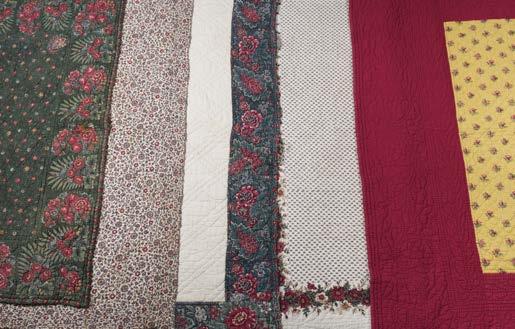
518* Quilt. A 'bonnes herbes' pattern quilt, French, 19th century, the centre with scattered small flowers in red, yellow, and blue, on a ground of dark green flowers and foliage against black, wide border with large floral clusters in the same shades on a ground of dark green fronds against black, backing fabric with black dots on a ground of terracotta zigzag stripes (some minor marks, tiny holes, and a 2 x 2 cm stitched L-shaped repair), butted hem, quilted overall in yellow thread, 128 x 123 cm (50.5 x 48.5 ins), together with a white cotton wholecloth quilt with similar 'bonne herbes' border of dense flowers and leaves in red and blue, light toning to white centre, backed with blue-printed white cotton (slightly discoloured in places), butted hem (becoming unstitched in places), quilted overall in pale thread, 158 x 188.5 cm (62 x 74 ins), plus 3 other French quilts similar, all quilted overall and with butted hems: a scallop-edged quilt with sprigged centre surrounded by floral borders in two different designs, both in shades of pink and green, backed with white cotton, 143 x 159 cm (56.5 x 62.5 ins); an Indienne print quilt, with dense pattern of dainty flower meanders in red, blue, and green, backed with alternating burgundy striped and plaid fabric (some small holes, mostly to one edge), 138.5 x 128 cm (54.5 x 50.5 ins); and a Provençal quilt, the centre with scattered pink flowers on a yellow ground (some faint discolouration), with wide red border, backed with white spotted red cotton (with some small patches and stitched repairs), edges becoming unstitched in places, 153 x 167 cm (60 x 65.5 ins) (5)
£300 - £500

519* Sampler. A needlework picture by Elizabeth Davis, 1829, finely worked in silks in shades of red, green, blue, gold, and white, using cross stitch, stem stitch, and satin stitch, on a linen ground, with a Georgian house with chimneys in the centre, dated 1829 above the roof, and lettered on either side ‘Elizabeth Davis’ and ‘Aged nine years’, the house set in a formal garden with lattice fencing, arches, and trees either side, and terracing with pots of flowers in front, in the foreground a family group consisting of a young gentleman beside a sundial and a dog, flanked by a bonnetted young lady and a young girl, the latter carrying a basket, benches on either side, upper half of picture with didactic 5-line verse below a leaf bough, flanked by flower baskets and Greek crosses, the two halves of the picture separated by a border consisting of a lidded tureen in the centre flanked by crowns, anchors, and rose sprays, the whole enclosed in a meandering flower border, fraying slightly at edges into the border, but sometime neatly consolidated when mounted, otherwise in very good condition, 30 x 36.5 cm (12 x 14.5 ins), framed and glazed (30.5 x 45.5 cm)
The verse reads: ‘Fair is the Rose but withers soon away;/Fair the spring violets, but soon decay;/Fair is the lily, but in falling dies;/And the white snow not long unsullied lies:/Thus blooming youthful beauty quickly flies.’
520* Sampler. An 18th century needlework by Deborah Sparke, 1745, worked in cross-stitch and Algerian eye stitch, in polychrome silk threads (some faded), on a light beige linen ground, with alphabets in upper and lower case, interspersed with crowns and hearts, above the Lord’s Prayer between borders, with 3 flower urns to lower margin flanked by crowns, and with lettering below ‘1745 Deborah Sparke wrought this Sampler in the 12th year of her age’, 38.5 x 21 cm (15 x 8.25 ins), framed and glazed (47 x 29 cm) (1)
£100 - £150
£400 - £600
An attractive Regency sampler, surviving in very good condition, the colours still bright and the linen ground robust. Whilst samplers from this period never cease to amaze due to the intricate work of children, this needlework is particularly finely stitched by Miss Davis, evidently a very accomplished young needlewoman by the tender age of nine. This sampler demonstrates a departure from earlier examples which most commonly depict rows of letters with various motifs such as generic dogs, birds, flowers, etc., depicted in isolation. Here, by contrast, there is a coherent scene, and a story is told: the inclusion of the family group, standing in the beautiful garden before their impressive country house, is an unusual detail and adds to the charm of the scene; the young girl pictured on the right is almost certainly a portrait of Elizabeth herself, the other figures her parents, and of course, at the centre of the grouping is their pet dog. (1)
521* Samples. A collection of fabric and wallpaper samples and designs, late 19th-20th century, comprising: 25 fabric samples, 1 labelled ‘Liberty’, 2 with printed label ‘Société des Nouveautés Textiles’, several labelled or stamped ‘Design Laboratory, Fashion Institute of Technology, New York’; 5 colour-blocked wallpaper or fabric designs, one annotated in manuscript ‘Wesserling Garniture’, another with pencilled marginalia pertaining to colours; and 8 original watercolour or gouache designs, all depicting different flowers, including poppies, auriculas, and violets, various condition, sheet size largest 42 x 29 cm (16.5 x 11.5 ins), smallest 6.5 x 7 cm (2.5 x 2.75 ins), a number mounted on paper or card (38)
£200 - £300
£200 - £400
522* Sewing. A layette pinwork pincushion, 1774, of curved rectangular form, the ground of cream silk satin, with design of handmade pins of varying sizes featuring a large flower head in the centre, a Latin cross above and the date ‘1774’ below, a large heart at each corner, and rectangles between to left and right sides, remains of tufted tassels at corners, lower side with some soiling and a pin hole, 16.5 x 12.5 cm (6.5 x 5 ins), together with 3 other 18th century pinwork pincushions similar, all with initials, and dated: 1704 (badly worn and leaking sawdust), 1773 (quilted front and back, toned, lace edging partially detached), and 1787 (double-sided, silk perishing to lower side revealing wool filling) (4)

523* Sewing. A layette pinwork pincushion, 1821, rectangular cream silk pincushion, the front with design of handmade pins forming the words ‘Welcome little Innocent/Welcome to the light of Day/Smile upon thy Mothers cheek/Smile and take her grief away’, and with the date ‘1821’, a crown above, and a heart below flanked by birds, initialled A S M E (a letter in each corner), chain border, cream loop fringe braid edging with a tassel at each corner, 17.5 x 22.5 cm (7 x 9 ins), together with 4 other 19th century pinwork pincushions similar, 2 dated (1809 and 1815), 2 with some wear (5)
£200 - £300
524* Shawl. A long Kashmir shawl, North India, circa 1860, large piece-worked wool shawl, the central black lozenge with embroidered maker’s mark and inventory number stitched in pale thread, enclosed in a scalloped ogee frame, and surrounded by large botehs and other motifs, incorporating a wavy line border, in shades of red, purple, turquoise, and green, both long and short edges with hand-embroidered polychrome harlequin gates, several gates with loss of fringing, but otherwise in excellent condition, 341.5 x 169 cm (134.5 x 66.5 ins)
An exceptional large Kashmir shawl, with the highly unusual feature - which we have not seen before - that the embroidered harlequin gates go round all four sides of the shawl, rather than just along the narrow ends as is usually found. The shawl is extremely well-preserved, and the glorious vegetable dyes are unfaded.
(1)
£2,000 - £3,000
Lot 524
525* Shawl. A silk stole of ribbon appliqué and embroidery, Edwardian, cream silk stole, the short ends with deep border of beribboned appliquéd rose blooms and buds fashioned from pink silk ribbon, leaves embroidered in green silk thread, 20 cm knotted cream silk fringe to short ends, some tiny holes and a few small marks, 6 cm repaired tear, 171.5 x 55 cm (67.5 x 21.75 ins) excluding fringe, together with 10 other shawls, including a red silk turnover shawl with woven floral border, an apricot figured silk stole with hand-embroidered borders across the centre, one corner with ink stamps ‘Made in China’ and the maker’s name in Chinese, and a late 19th century cream fine silk shawl with printed floral pattern, with manuscript note stating ‘This beautiful shawl was bought from the estate of Lady Patricia Davies whose husband was equery[sic] to Prince Philip.’, various condition and sizes (11)
£200 - £300
526* Shawl. A Spitalfields changeable silk shawl, circa 1810-20, changeable green silk, with deep border on one side consisting of 14 floral and foliate botehs woven in yellow, coral, black, white, and pale blue, between narrow decorative borders, border all round of 4 yellow stripes, short fringed edging (lacking in places), some scattered marks and tiny holes, 165 x 159 cm (65 x 62.5 ins) excluding fringe, together with another green silk shawl similar Provenance for first item: Purchased by Dr Joan Coleman at Phillips, 11th March 1997, lot 319; Kerry Taylor, ‘The Dr Joan Coleman Collection’, 9th March 2020, lot 395. (2)
£200 - £400
527* Shawl. A Spitalfields silk stole, circa 1810-20, large royal blue silk stole, the deep end borders woven in shades of green, pale pink, red, pale blue, cream, and pale yellow, with zigzag pattern at edge giving way to a border of large flower stems, with scalloped leaf border above, and finally a row of large flower heads on a bed of leaves, with arching foliate sprays above and a shower of floral stems below, knotted silk fringe to short ends, some faint brown marks, small L-shaped closed tear (1.5 x 1.5 cm) near one short edge, 270.5 x 76.5 cm (106.5 x 30.25 ins) excluding fringe (1)
£200 - £300
528* Shawl. A woven silk stole, circa 1830, pale yellow twilled silk, with wide borders at short ends, featuring 6 large palmettes woven in green, yellow, black, red, and blue, narrow scrolling floral border all round (that to long edges rubbed), short ends fringed, yellow uniformly faded (darker on reverse), some staining and marks, 267 x 76 cm (105 x 30 ins) (1)
£200 - £400
529* Shawl. An Egyptian Assuit shawl, circa 1920s, cream net woven with hammered white metal pieces forming a large central diamond with geometric rows of dromedary camels, with three similar but smaller geometric diamonds containing rows of camels to each side, the ends with narrow bands of geometric shapes, a few very pale brown marks, and a small number of metal pieces a little darkened, but otherwise in very good condition, 216 x 95 cm (85 x 37.5 ins)
Provenance: Captain Edgar Fawley Millington (1877-1962); thence by descent.
Captain Millington, mentioned in ‘Lives of the First World War’ at the Imperial War Museum, served in the British Army, becoming a Captain and Quarter Master in the Royal Army Medical Corps, based in Kantara, Egypt. He was mentioned in dispatches in 1919, and in 1938 received a Civilian Service Award as an Officer in the Order of St John. After the war he became a fireplace manufacturer in Preston, Lancashire. The shawl (along with various other small items) was brought back from Egypt as a gift for his wife Elizabeth (née Sunderland, 1883-1971).
(1)
£100 - £200
530* Shawl. Two large panels of paisley design, possibly Norwich, mid 19th century, printed pattern on a ground of very finely woven wool and silk, in shades of predominantly red, blue, and green, the main ground filled with rows of small botehs between pairs of floral sprigs, with a border to 3 sides of large botehs on a ground of floral stems, some minor wear (mostly to trimmed edges), sometime hand-stitched to a slightly larger backing of stiffened blue fabric, folded over to front on one edge forming a 5.5 cm border, together with a matching panel similar, with some later machine-stitching, worn in part (particularly to one end), each approximately 161 x 163 cm (63 x 64 ins)
Provenance: Private Collection, Derbyshire.
(2)
£100 - £150
531* Sudan. A Sudanese jibba and accompanying spear from the Madhist State era, circa 1880s-1890s, A-line tunic of cream thick twilled cotton, with round neck and straight sleeves, applied with rectangular panels of blue cloth to skirt and sleeves (faded to one side), star-printed red cloth patches to underarms, black v-shaped appliqués with onlaid roundel hemmed in yellow herringbone stitch to neck, flanked by chevron-edged circles of red felted wool, and printed red cotton ‘straps’ applied vertically from shoulders, with onlaid roundels as before, continuing in red felted wool with circles at the ends, neck, sleeves, and hem edged with dark fabric (worn in places, especially to hem), lined with linen, generally toned and marked, some small losses to appliqués (notably the black fabric to neck), chest 80 cm (31 ins), sleeves 42 cm (16.5 ins), length 85 cm (33.5 ins), together with associated spear, the broad leaf-shaped tip of tempered iron, with short wooden pole handle (cut down), width of tip 11 cm (4.25 ins), overall length 58 cm (22.75 ins), plus paperwork from the vendor pertaining to provenance
Provenance: Retrieved from the battlefield at Omdurman in Sudan in 1898 by a medical officer serving with the British Army; bequeathed by the medical officer to his daughter; given by the daughter to the current owner's family in the 1950s.
See V&A (accession number CIRC.563-1967) and British Museum (e.g. museum number Af1954,+23.3417) for similar.
A rare tunic known as a jibba, from the period of the Mahdist State in Sudan; the British Museum holds a number of jibbas, but none with quite such distinctive decoration as this.
In 1881 Sufi leader Muhammad Ahmad bin Abdullah (later Muhammad alMahdi) led a movement of rebels against the Ottoman-Egyptian ruling class of Sudan, gaining control of Khartoum in 1885. He died shortly afterwards, but the Mahdist state survived until 1898, when it was terminated by AngloEgyptian forces. These forces, led by Field Marshall Herbert Kitchener, won a decisive victory against the Mahdist army at the Battle of Omdurman on 2nd September 1898. The Mahdists’ traditional spears and swords turned out to be no match against the Anglo-Egyptian army’s advanced weaponry, particularly rifles and Maxim guns, and thus the power of the Mahdists was broken, leading to the reconquest of Sudan.
Jibbas developed from a form of dress, known as muraqqa’a, worn by the Mahdi’s early followers. These were ragged patched garments worn by dervishes (literally ‘poor men’) who were followers of Sufi religious orders, and their garb symbolised their rejection of worldly goods. However, as the Mahdi state became more established it was decreed that the dervishes should be re-named ansar (‘helpers’) and the muraqqa’a became the more formal jibba, with decorative rather than functional patches, reflecting the changing ideology of the Madhist State from predominantly religious zeal to military and political expediency. The slightly differing styles of the jibba is believed to reflect the regional affiliation of the wearer.
(2)
£1,500 - £2,000
Lot 530
532* Tapestry. A capriccio landscape tapestry, France, 18th century, woven in shades of pink, orange, green, and brown, with a scene of exotic birds against the backdrop of a temple set on an arched rock, with another building nearby, framed by palm trees and flora, with a border of roses, fringed to side edges, faded, occasional minor wear and unobtrusive repairs, modern backing fabric, sewn to top edge with metal curtain rings for hanging, 190.5 x 240 cm (75 x 94.5 ins) excluding fringe
Provenance: Mrs Lydia Bixby of Boston (died 1878); Christie’s, London, 12th July, 2007, lot 1777.
Lydia Bixby, famous for supposedly losing five sons during the American Civil War and recieving a letter of condolence from President Abraham Lincoln, is briefly mentioned in the 1998 film Saving Private Ryan. In the film, General George Marshall reads Lincoln’s letter to his officers before giving the order to find Private Ryan and send him home.
(1)
£500 - £800
Lot 531
Lot 532
533* Tapestry. A large tapestry in the style of David Teniers the Younger (1610-1690), French, circa 1900, machine-woven in polychrome cotton threads, with a frieze of peasants carousing, including musicians, dancers, drinkers clanking tankards, courting couples, etc., with a lady and gentleman, and their son and servant girl, looking on, the lady carrying a fan, against a backdrop of trees and buildings, including rustic thatched dwellings and a church with spire, some fraying along top edge (mostly inside the edge), 3 cm closed tear to lower portion of tapestry and a similarly-sized area of fraying nearby, metal loops for hanging to verso of top edge, 156 x 383.5 cm (61.5 x 151 ins)
Flemish painter David Teniers was the most famous 17th century painter of peasant life, achieving international renown in his own lifetime, especially in France, and his scenes have been continually imitated over succeeding centuries.
(1)
£300 - £500
534* Theatre. An Alice in Wonderland Queen of Hearts costume, mid-late 20th century, a handmade costume, comprising a skirt and an overdress: the skirt with front panel of scarlet cotton, handquilted with hearts and flowers and patterned with braid hearts and fleur-de-lys, and rear panel of quilted white cotton with train, waist 86 cm (34 ins), length at front 126 cm (49.5 ins) and at back 162 cm (63.5 ins); the overdress of thick white cotton, with wide round collar, long trumpet sleeves, and a train, hand-painted in red, blue, yellow, and black, with hearts, fish scale patterns, and other motifs, metal press studs and hook and eye fasteners to reverse (including press studs at end of train for securing train of skirt), some light dust-soiling and minor marks, bust 100 cm (39 ins), waist 82 cm (32 ins), sleeves 74 cm (29 ins), length at front 162.5 cm (64 ins) and at back 228.5 cm (90 ins)
(2)
£150 - £200
Lot 533
Lot 534
£100 - £200
535* Trade samples, Tootal Fabrics, Manchester, 1979-1982, a pair of large ledgers containing approximately 3,000 printed fabric samples, mounted on rectos and versos (some pages blank, and some samples missing), with up to 20 samples per page, including floral, plaid, figurative, geometric, stripes and spots, etc., annotations above most of the samples, including name, fabric type, stock number, date, some staining, one volume with a few fabric tabs, leaves 30 x 45.5 cm (11.75 x 18 ins), near-matching black half morocco, rubbed and some minor wear, one ledger with Tootal printed label to upper cover, large thick oblong folio (30.5 x 47 cm), together with an album of American machine-made lace samples mounted on green paper leaves, 66pp., 300+ white (and a few black) lace edging samples, up to 8 to a page, labels with stock number and price per yard in $ (ink prices scratched out), adhesive marks to front pastedown and facing leaf, original cloth-backed boards tied at spine, small ink numeral sticker to upper cover, oblong 4to (24.5 x 35 cm), plus a concertina trade catalogue of approximately 140 machine-made embroidered and broderie anglais lace samples manufactured by Eduard Schreiber, Lustenau, Austria, tall 8vo (29 x 17 cm) (4)
536* Versace. A pair of Chinese Emperor cushions, Italy: Versace, 20th or 21st century, 2 printed velvet cushions, with an image of a Chinese Emperor seated on an ornate golden throne on each side, blue and yellow colourways to one side, and orange and red to the other, each with gold fringing and a gold tassel at the corners, printed name ‘Atelier Versace’ to each side, 57 cm (22.5 ins) square, 15 cm (6 ins) deep, together with 4 other cushions: a pair of red and gold damask cushions, with woven label ‘Gallery of Antique Costume & Textiles, London’, fringed trim worn, one cushion with 11 cm frayed split to one side; a large yellow silk cushion with metalwork embroidery and spangles, silk shredded (with occasional loss of threadwork); and a hand-embroidered cushion depicting 2 children dressed as pierrots (unfinished, and with a couple of small holes), various sizes (6)
£200 - £400
537* WWI tapestry. A machine woven WWI tapestry commemorating the sinking of HMS Albion when it was struck by a mine laid by SS Königin Luise on 6 August 1914, showing SS Königin Luise in the foreground firing at HMS Albion, titled below ‘Untergang des Engl. Kreuzers Albion’, 39.5 x 49 cm (15.5 x 19.25 ins), presented in a perspex-glazed modern frame (64.5 x 71 cm), with a detailed conservation report (1)
£100 - £150
Lot 536
542* Lace. A large collection of collars, 19th and early 20th century, approximately 70 white or cream lace collars, mostly handmade, together with a few other items, including lace falling bands, several lace lappets, a black lace head covering, and a few whitework collars, various condition and sizes, contained in a large dark blue cloth-covered box with hinged lid, interior with 4 trays for holding lace, worn, height 16.5 cm (6.5 ins), width 63.5 cm (25 ins), depth 40 cm (15.75 ins) (approximately 80)
£400 - £600
540* Lace. A collection of lace, 19th and early 20th century, including handmade and machine-made lace, mostly white and cream, but also some black lace, some large pieces, others small fragments, mostly length and flounces, but also including bonnets, sleeves, stoles and shawls (e.g. a black Chantilly shawl), runners, wedding veils (mostly damaged or cut down), cuffs, etc., various condition and sizes (2 cartons)
£300 - £500
541* Lace. A flounce of intricate needlelace, possibly Italian, 17th or early 18th century, handmade cream flat needlelace, with large volutes and floral motifs, including daffodils and carnations, joined by picoted bars, sometime attached to later border along top edge, some breaks in brides, and occasional small marks, width 32.5 cm (12.75 ins), length 305 cm (120 ins)

543* Lace. A large marriage bedcover, circa 1870-1890, composed of cream tape lace with needlelace fillings, joined with picoted bars, and with inset needlelace figurative panels: a central oval depicting playful cupids, one lying asleep under a tree, having his nose tickled by another with a leaf frond, framed by trees; and ovals of a single cupid at each corner and the centre of each side, scallop-edged chevron border, some scattered toning, and one or two breaks in brides, 240 x 308.5 cm (94.5 x 121.5 ins), together with a pair of large figurative lace cushion covers, early 20th century, with central panel depicting a pair of dancing figures, 63 cm (2.74 ins) square, and a lace tea cosy depicting on each side a teapot flanked by cups and saucers, lined with padded rose pink satin, 27.5 x 33 cm (10.75 x 13 ins)
£200 - £300
The very intricate and detailed patterns in this lace would have been extremely time-consuming and labour-intensive to make, and therefore the motifs may have been worked by more than one hand. (1)
A very pretty bedcover, with its theme of cupids undoubtedly made as a wedding coverlet. (4)
£150 - £250
544* Lace. A length of Genoese bobbin lace, early 17th century, composed of cream linen thread, with roundel and drawer handle design, and smaller roundels in scalloped edge, occasional fox spots, width 16 cm (6.25 ins), length 64 cm (25 ins), together with: A length of tape based needlepoint lace, probably English, 17th century, composed of ivory linen thread, with flower and volute design, including a large carnation and stylised lilies, some faint foxing, occasional breaks in brides and picot edging, width 9 cm (3.5 ins), length 92 cm (36.5 ins), plus
A length of flat point needlace, probably English, mid-late 17th century, composed of cream linen thread, with a pattern of scrolling stems and floral motifs, width 9 cm (3.5 ins), length 130.5 cm (51.5 ins), and
A length of Mechlin lace, late 17th century (or possibly early 18th century), composed of ivory fine linen thread, with a pattern of flower stems, lightly toned, width 7 cm (3 ins), length 249 cm, plus 8 other labelled pieces of 17th century lace: ‘Italian mezzopunto’; ‘Genoese plaited bobbin lace’; ‘Venetian(?) needlepoint’; ‘Needlepoint, probably French’; ‘Italian Point Plat de Venise (possibly very late 16th century)’; ‘Mezzopunto, possibly English’; ‘Needlepoint, with later bobbin lace edging, Spanish or Venetian’; ‘Needlepoint, probably Italian’, longest: width 9 cm (3.5 ins), length 86 cm (34 ins), shortest: width 8.5 cm (3.25 ins), length 19 cm (7.5 ins) (12) £200 - £400
545* Lace. A length of Mechlin lace, Belgium, late 18th century, finely worked in cream thread with scalloped flower pattern, some toning and foxing, one or two small holes, width 5.5 cm (2.25 ins), length 197 cm (77.5 ins), together with 11 other lengths of 18th century lace, variously labelled: ‘18th Century Bobbin laceprobably Devon, could be Flanders’; ‘Devon bobbin lace - before 1750’; ‘Flemish/German Peasant Bobbin lace’; ‘Binche Bobbin lace. Made in the Flanders area, about 1715’, etc., longest: width 4 cm (1 ins), length 200.5 ins (79 ins), shortest: width: 5 cm (2 ins), length 51 cm (19.5 ins), plus: 20 other pieces of 18th century lace mounted on card, mostly small pieces, but including one or two longer lengths and a Mechlin lace collar, various condition; and a 17th or early 18th century sampler of Italian bobbin lace, worked in cream linen thread with 9 horizontal borders of varying widths, within a narrow border, widest border (in centre) with some breaks, 56.5 x 52 cm (22.25 x 20.5 ins)
(33)
£200 - £400
546* Lace. Lace samples, 18th century and later, white and cream lace samples, comprising: 10 bifolium blue cloth-covered board folders, opening to reveal mounted samples of hand-made lace, some with manuscript paper labels, including tatting, Bruges lace, etc., several samples missing, foxed and toned in places, some of the cloth covering with historic moth damage, folders when closed 34.5 x 29 cm (13.5 x 11.5 ins) and smaller; a number of further lace samples mounted with pins in a large booklet of 8 pink glazed cotton leaves with pinked scalloped edges, held by butterfly pins at spine (some missing), dusty and creased, sheet size 32.5 x 46 cm (12.75 x 18 ins); and two plastic ring binders containing approximately 40 samples of lace mounted on card, some contained within plastic folders, mostly handmade, but also some early machine-made examples, most annotated in manuscript, e.g. ‘Low Countries Needlepoint Point de Sédan, c. 1700 Needle made net (vrai droschel)’, ‘18th Century Needlepoint Point d’Argentan’, ‘Brussels needlepoint on vrai drochel[sic] (hand made net) 19th century’, one of the folders containing samples from Northamptonshire/Buckinghamshire/Bedfordshire, e.g. ‘Bucks Wedding Bell A late 19th Century design from the Olney Lace Factor’, ‘Child’s collar showing strong Bucks elements’, ‘Pillow-lace Traditional Bedfordshire Maltese pattern Made by Selina Brown, Wappenham in the 1940s’,’”Cluny” style Rose and Leaf design, made at Abthorpe, early 20th century’, etc.; and a group of approximately 50 lace samples mounted on loose sheets of card, 19th and early 20th century, some small fragments, others longer lengths, and a few complete pieces (e.g. cuffs, jabot), many annotated, e.g. ‘Honiton Bobbin lace Guipure Late 19th century’, ‘Simple 19th century Bruges edging’, ‘Bobbin lace Mechlin type’, ‘19th Century tape lace with needle fillings Branscombe point (Devon)’, etc., together with 2 mounted pieces of Point de Gaze lace, framed and glazed (26 x 32 cm), plus some related ephemera pertaining to the history of lace, including: 2 plastic folders containing annotated photocopies of lace; typed and manuscript information relating to a wide variety of subjects, e.g. allusions to lace in literature, ‘The Spratton Lace School, about 1840’, lace and education (at Great Marlow, Bucks, 1626); and a typed A4 booklet ‘The History of Lace’ by Eileen Robbins, 4ff., with the author’s annotations (a carton)
£200 - £300
Lot 544
Lot 545
Lot 546
548* Lace. A collection of lace, 17th century & later, hand and machine-made white and cream lace, including lengths, collars, berthas, sleeves and cuffs, flounces, part of a large veil or train, an overdress, etc., one unfinished piece still stitched to pen & ink fabric pattern, annotated in early sepia ink to top margin ‘from M. Stewart. 55 West St. Brighton.’, some with biro labels ‘Genoese 17th century 3 pieces of edging’, ‘needlepoint Reticella? early’, ‘English Needlepoint. 17th century?’, various condition and sizes, together with a few items of whitework embroidery, including 3 portions of 18th century fine drawn thread work with voluted strapwork design incorporating large floral motifs, and with embroidered butterflies, birds, and sheep, with varying degrees of toning and foxing, smallest pieces consisting of a sleeve and a bib front, largest piece 24 x 34 cm (9.5 x 13.25 ins)
(a carton)
£150 - £250
£150 - £200
547* Lace. A collection of collars, 19th century, 20 collars and berthas, of white or cream lace, mostly handmade, 3 between double-sided glass, framed (48 x 48 cm and smaller), together with: 3 other items of cream lace (a pair of ungathered cuffs and a short flounce); 10 items of black lace; and a cream net veil with tambour work and large bow appliqués in satin, various condition and sizes (34)


549* Lace. A lace-trimmed shawl, circa 1840-1850, fine cream silk shawl, with hand-worked lace insertion border and outer border, latter scalloped, the scallops terminating in pairs of cream silk tassels suspended from twists of cream chenille, a few stitches broken to one seam, but otherwise in excellent condition, tasselled edging 4.5 cm (1.75 ins), size excluding tasselled edging 96.5 x 94 cm (38 x 37 ins), together with a small group of other lace and whitework items, mostly handmade, including short lengths and flounces, collars, cuffs, a baby bonnet, and a whitework camisole, plus a small square Chinese cream silk shawl, hand-embroidered overall in cream silk threads, fine knotted tasselled edge, mostly in good condition
Provenance, shawl: Janette Wallace née Rodger (1803-1862), wife of General Sir John Alexander Dunlop Agnew Wallace Bt KCB (1775-1857), of Lochryan House, Wigtownshire, Scotland, and thence by descent. Wallace fought under the Duke of Wellington in the Napoleonic Wars, apparently distinguishing himself and being mentioned several times in despatches. After the Battle of Busaco in 1810, the Duke of Wellington is reported to have said ‘Wallace, I never saw a more gallant charge than that just made by your regiment’. (a small carton)
£150 - £200
551* Advertising Fan. French restaurant advertising fan, early 20th century, a folding fan with paper leaf promoting the Minstrel’s Bar (at Le Rat Mort, Paris), the chromolithographed image depicting a moustached gentleman in suit and bow tie, surrounded by three dancers in low-cut ballet costumes, marked ‘L. Prevel’ to left, and ‘Eventails Ganne Paris’ to right, few faint fox spots, some rubbing to folds, single very small hole near top edge (with associated very small surface loss to opposing panel), wooden monture, 24.5 cm (9.75 ins), and another similar, promoting the Minstrel’s Bar, with a design by L. Prevel after Draner, together with:
Casino de Paris fan, 1st June 1904, double-sided folding fan advertising ‘Fete Henry Monnier au profit de la caisse de secours des dessinateurs-humoristes’, recto with chromolithographed scene depicting a wedding procession of caricatured ladies and gentlemen in their finery following the bride and groom, marked ‘Léonce Burret 1904’ near left edge, verso with the title and a small lithographed illustration by Louis Morin, showing a young lady shaking money out of her dress, in front of an elderly couple on a bed, captioned ‘ma collerette est un peu chiffonné, mais voila ce que je vous apparte’, some toning and minor marks, some edge fraying (and a few small repairs), a couple of longer splits to verso (affecting small image and caption), wooden monture, 24.7 cm (9.75 ins), plus:
£150 - £200
550* Advertising Fan. Champagne, French, 1889, an unusual telescopic fan promoting champagne, in the form of a champagne bottle with cork, the cork pulling up to reveal a gradually expanding fabric leaf (3 cm tear to one fold near handle, toned to edge), opening to a full circle, hand-painted with pink flowers and foliage, the central (faded) tube with an image of the Eiffel Tower and ‘Paris 1889’ on one side, and ‘Exposition Universelle’ on the other, small chip and tear to top of tube, decorative paper covering to cork and bottle neck with small surface losses, the red bottle label edgechipped and rubbed (lettering indecipherable), 15.7 cm (6.25 ins), together with a folding paper fan promoting J. Lemoine Cuvée Royale champagne, early 20th century, the unusually shaped leaf titled ‘Douce Revanche’, with a colour lithographed scene by J. Ganne of Paris, depicting a racecourse with greyhounds as the spectators in top hats and smoking cigars, watching gentlemen in waistcoats and bow ties running the race, a bottle of champagne as the lure, verso (with some pale foxing) advertising the champagne, leaf ends lightly creased, wooden monture, 24 cm (9.5 ins), in a contemporary fan box, plus another 3 paper fans advertising champagne (3 by Chambrelent), including a fontange fan promoting Taverne de L’Olympia and Champagne Chauvet, with a colour lithographed nightclub scene showing a band playing, a waiter, and a couple dancing, and 2 cockade fans, advertising Champagne Armand Reims Limbourg, and Royal Riviera Champagne, all (except the first listed) with wooden montures, generally good condition, various sizes (5)

Le Pre Catelan fan, early 20th century, a folding fan advertising Le Pre Catelan, Armenonville, and Cafe de Paris restaurants in Paris, the semi-transparent leaf with colour lithographed floral design overlaid with black net trimmed with red spangles, slight edge fraying, wooden monture, the right guard gilt lettered and decorated, 21.7 cm (8.5 ins), and another 4 Le Pre Catelan fans (2 also advertising Foyot [sic] restaurant), 3 trimmed with spangles, plus 45 other fans, comprising: 3 hand-painted folding fans, 2 promoting Maxim’s and the 3rd Cafe Voisin; 2 palmette fans, one advertising Restaurant Zucco in Montmartre, the blades of pierced paper (defective), the other with shaped blades bearing swirling designs in metallic glitters, for Pavillon de la Cascade Restaurant, Bois de Boulogne; 2 folding fans promoting Le Rat Mort in Montmartre, one with photographic images of 3 beauties, the other with a chromolithographed drawing of a dining couple, with printed signature of M. Miltiene[?] dated ‘07, and 38 other fans advertising French cafes and restaurants, comprising 35 folding (some fontange or forme ballon), one cockade, one fixed/handscreen, and one card brisé fan, various condition and sizes (53)
£150 - £200
552* Advertising Fan. Zig Zag trick fan for D.L. Clark Co., Pittsburgh, Japan: circa 1910, printed red card covers each on a bamboo stick (one with lower 6.5 cm missing) with coloured honeycombe tissue paper between (slightly creased in places), one cover printed ‘Delicious Zig Zag The Food Confection’, the other with information about the fan, 44 cm (17.5 ins), together with: Twenty-five advertising fans, French, early 20th century, 25 paper fans, comprising 21 colour-printed folding fans (some fontange), and 4 fixed fans (one monochrome), some signed by the artist (e.g. Jean Gabriel Domergue, A. Willette, E. Borne, Marcel Jacques Hemjic, G.K. Benda, Jack Roberts), one advertising the Taverne Pousset depicting frolicking juvenile pierrots, all mounted on wooden sticks, various condition and sizes
A rare survival, made in Japan for the D.L. Clark Co. in the US. Founded in 1886, the company manufactured various candy including the popcorn, nut, and molasses confection named ‘Zig Zag’. These fans were designed to improve shop displays, and therefore sales, of the confectionery: ‘“This is a hand-made trick fan, and can be turned into twenty-five different designs—all beautiful. It is imported from Japan and is very expensive, but for a limited time, we will pack one in each carton and case of Zig Zag. It will add to the beauty of your store or display window. Zig Zag adds to your bank account. Keep it in stock—always. The D.L. Clark Co., Pittsburgh.”’ (26) £150 - £200

554* Advertising Fans. A group of 36 Italian and 57 Spanish advertising fans, the Italian fans including: 7 card tri-fold fans, with adverts including Vini Spumanti Bellagamba, Alati of Rome, and Pelliccerie Hazan; 21 fixed or handscreen fans, with card leaves, most handles card, some wooden, one leather, adverts including Pasticcerie Zanarini (with mentions of Cinzano, and Sarti liquor), Caramelle ditta Severino Cei Milano, Federazione Colombofila Italiana (pigeon fanciers), Cinzano, and Edizioni ‘Il Secolo Illustrato’ magazines; and two card fixed fans, promoting Espinasse-Jeandeau (children’s clothing shop in Marseille), each with a small sound box on the verso (emitting a squeaking sound when the fan is moved), the Spanish fans including: 9 card fixed fans advertising Eduardo Delage amontillado & brandy, with humorous scenes on rectos; 21 fixed fans with wooden handles, adverts including El Agua Radium [from] Juan Carballo Anerez of Seville, and F. Michel Marra, distillateurliquoriste; and a further 26 card fixed fans, including two with bullfighting scenes, and 11 promoting Construcciones Rod of Seville and depicting film stars such as Clark Gable, Claudette Colbert, Rita Hayworth, etc. (some duplicated), various condition and sizes (93) £100 - £150

553* Advertising Fans. A group of 21 French cockade advertising fans, early 20th century, comprising 11 fans advertising alcoholic beverages, 10 advertising other French products, cafes etc., most with colour lithographed advertising pictures on the guards, the alcoholic drinks comprising: Cristal-Vouvray champagne, Bardinet Old Nick Rum (Rhum Negrita), Bardinet fine old cognac, Veuve Amiot wines, Angers Guignolet Cointreau (and triple sec), Pippermint Get (3 fans: 2 copies of the same & another), Amer Picon, Bardinet Salambo , and La Fraisette, the other fans including: Hotel Meteropole Bordeaux, L’Altericide sweets, Taverne Henri IV, Marguery Paris, Corset Isabelle, & others, all opening to show coloured honeycomb tissue paper leaves, 3 alcoholic drink fans with further advertising name to a secondary (smaller) paper leaf, many by Chambrelent of Paris, 2 with metal guards, the remainder wooden (one with some loss to a guard), various condition, each approximately 23 cm (9 ins) or similar, plus a single colourful (non-advertising) cockade fan (22)
£100 - £200

555* Advertising Fans. Au Bon Marche, Paris, early 20th century, a folding paper fan with hand-painted Japanese scene, the guards promoting Au Bon Marche, the blank verso stamped Made in Japan, a few folds rubbed, slight fraying to fold ends, green-painted wooden monture, 21.5 cm (8.5 ins), together with Nestle, late 19th-early 20th century, a folding fan promoting ‘Nestle Swiss Milk … The Best in the Market’ on the recto, with a hand-painted Japanese design of flowers and a bird, verso stating ‘Nestle’s Swiss Milk, the Richest in Cream’, and stamped ‘Made in Japan’, a little rubbed, some splitting to folds, wooden monture, 30 cm (11.75 ins), plus Printemps, late 19th-early 20th century, a folding paper fan with hand-painted Japanese scene, heightened with gold, single small brown mark near upper left edge (with associated tiny hole), couple of fold ends with tiny splits, white-painted wooden monture, one guard with gilt lettering promoting Printemps and stating ‘Importe du Japon’, 20 cm (7.75 ins), with another 88 French (except one Nestle fan with Spanish lettering) advertising fans, comprising: a further 10 chocolaterelated (3 cockade), including 2 hand-painted (one for Kohler, the other for Henri Nestle’s condensed milk); a further 9 folding fans promoting Au Bon Marche, 3 hand-painted (two stamped ‘Made in Japan’), artists including L.P. Regent and A. Lopez; 30 folding fans, 5 hand-painted (3 marked from Japan), advertisements including Chateau Roberts Vichy, Hotel d’Angleterre (Biarritz), Hotel Westminster (Paris), The Carlton (Monte Carlo), Crème Simon, Galeries Lafayette, Printemps, Theatre St Etienne, Exibard, Palais de la Danse (Olympia), Oxade, etc., artists including Dorfi, Tremayne Lark, Jean Gabriel Domergue (2 fans), Gabriel Ferro, etc., makers including Biere (Bordeaux), Francolin, Gilet et Cie, Chambrelent, Lachelin, Espi, Duvelleroy, Ganne; and 38 cockade fans, advertising various products and places, plus one paper tri-leaf folding fan, various condition and sizes (91) £100 - £150

557* Autograph Fans. A pair of fans, late 19th century, two large folding fans, the paper leaves with contemporary ink manuscript inscriptions, many signed, some dated, one fan approximately half full, the other with just 6 compartments filled, the inscriptions mainly of poetry or quotes, most in French or English, a few in German, one Italian, the autographs including: W.E. Gladstone, Theodore Martin, Lord Lytton, Duc de Noailles, and Leopold Prince of Hohenzollern, foxed and dust-soiled, wooden sticks, lacquered below the shoulder, the wooden guards lacquered deep green and painted with birds, flowers and foliage, each 50 cm (19.5 ins), together with:
556* Advertising Fans. Two Dubonnet fans, Paris: Chambrelent, 1930s, two folding paper fans promoting Dubonnet, each with design after A.M. Cassandre, the first depicting 3 illustrations of a stylised seated gentleman in a suit and bowler hat drinking and then refilling a glass of Dubonnet, with the tagline ‘Dubo… Dubon… Dubonnet’ above, both sides of the double leaf fan with the same design, marked ‘Apres A.M. Cassandre 32’, one side with some soiling to right-hand panel, the other side with small brown stain to right-hand panel, the second double leaf fan with each side portraying a single seated gentleman in waistcoat, striped shirt and bowler hat, adding soda water to a glass of Dubonnet, with the same tagline, each leaf marked ‘d’apre A.M. Cassandre 35’, small brown mark to one edge, very small corner crease, both with wooden monture, 24.2 cm (9.5 ins), together with another 50 paper fans advertising French alcoholic drinks, all by Chambrelent, comprising 23 folding fans of various forms (mainly fontange and forme ballon), and 27 cockade fans, all with wooden sticks, including fans promoting L’Anis del Toro (with a design after Thor), Toni-Kola (with a design after [Henri] Le Monnier), Cherry-Rocher, Amer Picon, Cinzano, Biere Graff, La Cressonnee, Pernod Export, Montmorency, Cognac G. Bonhomme & Co., etc, various condition and sizes (52)
£100 - £200
An autograph wooden brisé fan, late 19th century, with similar inscriptions, most signed and dated, the recto fully inscribed, the verso partially full, the ink manuscript often faded, sometimes indecipherable, a brown tassel to metal loop, 26.5 cm (10.5 ins), plus: Theatre Fan. The Dramatic Celebrity Fan, London Stereoscopic and Photographic Company, late 19th century, a folding paper fan, the recto with numerous monochrome mezzotype images of actors and actresses, including Ellen Terry, Henry Irving, Annie Irish, Arthur Roberts, Olga Brandon, etc., publisher’s imprint trimmed, some light foxing, folds a little rubbed, verso with ‘Mounted in Austria’, the wooden monture painted gold, 34 cm (13.25 ins), with original box (defective), the lid interior with printed title label (4)
£100 - £150

558* Cats. Café Riche fan, early 20th century, a palmette or Jenny Lind fan, advertising the Parisian Café Riche, each shaped cream paper blade with a cat’s head embossed and lightly shaded, the eye painted green with black pupils, lightly toned and creased, front blade foxed, a few very small repaired edge tears, wooden monture, 20.1 cm (7.75 ins), together with Brasserie Universelle fan, a fontange fan with paper leaf, the chromolithographed image depicting a Louis Wain-style smiling cat holding a cocktail glass filled with yellow liquid and cherries, with several groups of cherries hanging down from the border above, the fan recto lettered ‘Brasserie Universelle’ and marked ‘Lachelin’, the verso with maker’s imprint, folds lightly rubbed with some slight foxing, minor brown mark near left edge, some small tears and tiny edge chips (a couple repaired on verso), wooden monture, 27.2 cm (10.75 ins), plus another Brasserie Universelle fontange fan by Lachelin, central large chromolithographed image of a cat’s head, with a green ribbon and bow around its neck, surmounted by a line of cat’s heads in various poses arrayed around the fan edge, some toning and slight foxing, top edge a trifle frayed (couple of small repairs on verso), few small holes or splits to folds, wooden monture, 28.7 cm (11.25 ins) (3)
£150 - £200
Lot 557

559 Decorative Fan. Neptune and Amphitrite enthroned in their sea kingdom, Dutch, circa 1840, double-sided fan, the obverse with a hand-coloured lithograph of Neptune and Amphitrite seated on a throne flanked by flying putti and looking down on a host of cavorting nereids, tritons, and other creatures, on a blue ground, painted with latticework in silver, engraved roundels of sculptures to left and right within a gilt frame, some neat paper repairs and retouching to upper portion of folds, the verso painted with a watercolour and gouache seascape of sailing boats (2 flying the Dutch flag) and an elevated wooden look-out, and a scrollwork and floral border, mounted on gilded and painted filigree mother of pearl sticks depicting shells, fish, and a scorpion, gilding intermittently tarnished, 29 cm (11.5 ins), contained in an ivory silk-covered cardboard fan box (soiled and a little worn), with Duvelleroy's label inside lid, together with 3 other 19th century folding fans mounted on filigree mother of pearl sticks: one with a leaf of chicken-skin painted in watercolour with a romantic historical scene of ladies and a gentleman in a garden, one of the ladies holding a fan; and the other two each with a handcoloured lithograph depicting a bucolic scene of young ladies and gentlemen, one with a watercolour riverscape on the verso (one stick broken), and the other painted in silver to verso with fern fronds and a border (guard sticks repaired), each in a fan box (that to final fan missing lid), plus a hand-painted fan depicting children and birds, circa 1870, gouache on gold silk, depicting 3 small children and 2 brightly coloured birds amongst leafy fronds, folds lightly rubbed (and a few beginning to fray in places), mounted on lavishly gilt decorated wooden sticks, 33.5 cm (13.25 ins) (5)
£150 - £250
560* Decorative Fan. A lace and satin fan, early 20th century, folding fan with faux ivory monture, cream satin leaf with wide cream lace border, the loop with cream tassel on long twisted cord, some foxing (mainly to lace), 32.7 cm (12.75 ins), together with 2 ostrich feather fans (one in contemporary card box), a selection of ostrich and snowy egret feathers for adorning hats, 6 pairs of long gloves, 8 pairs of short gloves (most leather or kid, 2 pairs fabric), and a small number of other accessories (a carton)
£100 - £150

561* European Fans. Coronation souvenir fan, 1902, a folding fan celebrating the coronation of King Edward VII, the paper leaf decorated with chromolithographed roses and thistles, surmounted by three crowns, titled ‘Coronation 1902’ and ‘Carlton Hotel’, strikethrough from browned adhesive on ribs, edge a little frayed (couple of small repairs to verso), the wooden monture with gilt decoration, 27.1 cm (10.75 ins), together with: Chocolate advertising fan, early 20th century, a cockade fan advertising Caley’s Chocolates, made by Chambrelent of Paris, with semi-transparent leaf and wooden guards, 24.8 cm (9.75 ins), plus another 42 European fans, comprising: 26 British fans (2 celebrating the 1911 coronation, one for the 1902 coronation, 4 cockade fans advertising Luce’s Jersey perfumes, one cockade fan promoting St. Ivel’s cheese, a fontange fan for the Savoy Hotel, London, and one for the Tricity Restaurant, a folding fan promoting the Hotel Metropole, London, 8 folding BOAC fans, and a cockade fan advertising Mullard radios); 9 Italian fans (including one handpainted folding fan, the paper leaf with a seascape showing boats with purple and brown sails, and advertising the bitter liqueur Fernet-Branca, Fratelli Branca Milano, the wooden monture decorated with metallic paints); 6 German fans; and one Austrian fan, various condition and sizes (44)
£100 - £200

562* Moveable Fan. Pan-American Exposition advertising fan, 1901, a fan with a very unusual revolving mechanism, consisting of a flat card screen, with chromolithographed image of a buffalo on a frying pan background, surrounded by an ornamental green border, a cherub at the top holding a dated medallion, the name Pan-American beneath the pan, and on the pan edge the statement ‘Patented Jan 22nd 1901’, verso with a monochrome image of the Niagara Falls photographed by H.E. Grandall, the card screen attached with metal pins to a mechanism comprised of metal rods, two wooden sticks, and twisted twine, enabling the screen to rotate when the wooden sticks are squeezed, the somewhat creased and toned screen a little rubbed in places, 2 cm closed tear to bottom edge, 38.9 cm (15.25 ins), together with: Telescopic Fan, Guantanamo Bay souvenir fan, a telescopic fan of unusual design, comprising a shaped wooden handle, with title and painted image of a sinking ship carrying the American flag on one side, and a small oval mirror set into the other, a red tassel at the top pulling up to reveal the cockade-style decorative leaf with lace edging, some light toning, couple of tiny holes to one fold, 26 cm (10.25 ins), plus 5 other American folding fans, including 3 souvenir fans for the 1876 International Exhibition at Philidelphia (two fabric, one paper), and a Canadian paper folding fan celebrating the restoration of St. Lawrence Hall, Toronto, in 1967, various condition and sizes
The Pan-American Exposition was a world’s fair held in Buffalo, New York, United States, May 1st-November 2nd 1901. (8) £100 - £200
563* Nock (Olive, 1893-1977). Painted fan, circa 1930s-1940s, the satin leaf painted with Australian blue wrens amongst blue flowers and foliage, signed Olive Nock to left-hand side, lined to verso with cream gauze (with a single small hole), the monture of wood from the bird’s eye maple, one rib with previous neat repair visible through the gauze, 22.5 cm (8.75 ins), housed in original wooden fan box (lid defective), the underside with ‘O. Nock’ in neat ink manuscript (probably the artist’s hand)
According to a biography of Olive Nock written by Margaret Betteridge in 1995, which can be read on the Design & Art Australia Online website, Nock ‘undertook numerous commissions, including a bird’s eye maple and satin fan hand-painted with blue wrens for Lady Gowrie’. From the description, it seems very likely that this fan is that made for Lady Gowrie.
Olive Nock was a celebrated Australian textile designer and painter, who produced works in various fields including ceramics, leather tooling, box making, and embroidery, as well as fans. In 1928 she won a competition for an Australian cloth design to be printed by Liberty’s of London. She became a member of the Society of Arts and Crafts (NSW) in 1929, and continued being an active member for four decades, having various roles including that of Patron.
Zara Hore-Ruthven, Countess of Gowrie (1879-1965) was the wife of the 1st Earl of Gowrie, Governor of South Australia 1928-34, Governor of New South Wales 1935-36 and the longest serving Governor-General of Australia 193644. She was renowned for her work in promoting the welfare of children in Australia, and the Lady Gowrie Child Centres were named in her honour. (1)
£200 - £300
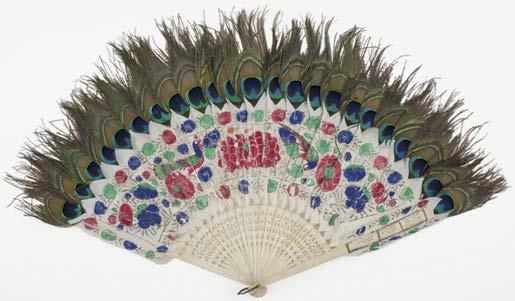
564* Oriental Fans. Peacock fan, late 19th century, a doublesided Qing Dynasty folding fan of white feathers hand-painted with peacocks and flowers, and tipped with peacock feathers, the verso painted with flowers, paint rubbed and some flaking, a few small losses to feathers, bone monture, 34 cm (13.5 ins), together with: Japanese money fan, early 20th century, double-sided folding paper fan, hand-painted with flowers, a bird, and Japanese coins and tokens, far right with artist’s name Nakajima, verso with similar design incorporating a butterfly instead of the bird, some soiling and discolouration, especially to right side of recto (and left of verso), one fold with 4 cm split, wooden monture, with decorative guards, 39.5 cm (15.5 ins), plus Oriental hunting fan, a double-sided bamboo brisé fan, painted with a hunting scene, depicting men with a horse, dog and falcon, watching flying cranes, the verso painted with flowers (including blossom) and a bird, the guards with gilt design of flowers and birds, 30 cm (11.75 ins), and two fixed fans, of Indonesian style, with carved horn handles and frames, each pierced and painted leaf with an elaborate design in black and gold, one on a blue background, the other red, both fans probably buffalo hide and horn, possibly from Sumatra or Java, both rubbed (the red fan more so), each 26.5 cm (10.5 ins), with another 32 Oriental and East Asian fans, most folding, some fixed, several hand-painted, various condition and sizes (37)
£150 - £250
Lot 563
565* Rebus Fan. A Victorian rebus fan, circa 1870s-1880s, a wooden brisé fan, with green ribbon, the sticks with pierced decoration to the upper parts, and with hand-painted rebus word puzzles below, most with a small onlaid leaf at the start (occasionally at the centre) of the puzzle, verso blank, one stick with repaired split and associated tiny hole, 23.5 cm (9.25 ins) (1)
£150 - £200
566* Roany. Painted folding fan, J. Duvelleroy, circa 1890, the fabric leaf painted in watercolour and gouache, showing stems of roses with leaves, buds and flowers, in grisaille with touches of brown and cream, signed ‘Roany’ to right-hand side, mounted on mother of pearl sticks, with bone ribs, a few faint fox spots and marks, verso of the double-layered leaf with a single small hole and some brown discolouration, 25.2 cm (10 ins), housed in the original cream silk-covered box (lightly soiled and foxed), inside lid lettered in gold ‘J. Duvelleroy, by appointment, London. 167 Regent Street. W.’, also with gold lettered ‘Manufactured in Paris’, together with: Decorative Fan. A sequinned fan, early 20th century, folding beige gauze fan, mother of pearl sticks, and bone ribs, the leaf profusely embellished with variously shaped silver and copper-coloured spangles (leaves, flowers, double loops) and embroidered with pale pink ribbon, arranged to form three bows with sprays of leaves and flowers coming from them, a couple of folds splitting, top edge lightly worn in places, some spangles broken, 2 sticks detached from leaf, 22.7 cm (9 ins), plus:
Painted Fan. A hand-painted fan, circa 1900, a folding fontange fan, the cream silk leaf painted with a central design of crossed quivers of arrows and bow, with entwined pink roses, surrounded by a circle and swags of pink, blue and purple flowers with foliage, surmounted by a blue ribbon, the guards and lower parts of the sticks of bone decorated with incised floral and foliate pattern, lightly coloured (some gilt), the ribs of thin wood painted white, some splitting to one fold, a couple of tiny holes to another, some minor brown discolouration, 20.5 cm (8 ins), and another 3 fans: an early 20th century green ostrich feather folding fan, with yellow Bakelite sticks, 62.5 cm (24.5 ins); an early 20th century Chinese sandalwood folding fan, with carved sticks, leaf with embroidered Chinese dragon design, the loop with tassels, 25 cm (9.75 ins); and a modern lace fan, plus an early 20th century yellow muff, the front covered in yellow ostrich feathers, approximately 36 x 48 cm (14.25 x 19 ins)
(7)
£150 - £200

567* Spanish Fan. A painted folding fan, early 20th century, the paper leaf and wooden gorge hand-painted with a colourful Seville scene, titled Patio de Banderas, signed ‘Chaparteguy Sevilla’, one guard with the maker’s ink stamp to verso, some folds very lightly rubbed, one folded section with tiny area of surface loss to top edge (adhered to facing section), 27.2 cm (10.75 ins), together with two other hand-painted folding fans, the first with paper leaf painted with a cartoon depicting a bull farm, with men and women observing the bulls from behind fences, and other visitors passing by in early motor cards and horse-drawn carriages, the bulls looking askance at the viewers, a rider on horseback gathering the animals, titled Real Venta de Antequera, signed ‘Rubio Sevilla’, black ink outlining lightly offset, several short splits to folds, one fold with long split, wooden monture, 23.2 cm (9 ins), the second with fabric leaf and wooden gorge painted with a scene of a toro bravo farm, the bulls being herded by ranchers on horseback, rubbed, top edge frayed with short splits, verso with a couple of old repairs and with some modern ink manuscript names (some crossed out, not affecting recto), 24.8 cm (9.75 ins), plus another 23 Spanish fans, including: 4 hand-painted; two with chromolithographed bullfighting scenes; two chromolithographed souvenir fans of Gibraltar and another Gibraltar souvenir fan of unusual telescopic design, being a shaped wooden holder decorated with a painted swallow, and with a small mirror set in, a tassel at the top pulling out the cockade-style leaf with lace border; two fans celebrating the 1982 FIFA World Cup held in Spain; and a fan depicting two scantily clad Spanish ladies playing cards, various condition and sizes (27)
£100 - £200
Lot 565
Lot 566
568* Bowl. A Chinese celadon glaze bowl, the centre with incised decoration and repeating geometric rim, the base plain with no markings, damaged, 35 cm diameter, together with another similar, damaged, 31 cm (2)
£200 - £300
569* Bowls. A collection of Chinese porcelain bowls, including a blue and white bowl with rounded sides and flared rim with scattered prunus blossoms on a cracked-ice ground above a band of petals raising from the base, the interior with similar central medallion and boarder, flower mark to base, 15.2 cm diameter, 7.5 cm high, together with a Chinese green glazed bowl, Qianlong period, of flared form, with olive glaze, seal mark to base, 19.7 cm diameter, 7 cm high and two others (4)
£200 - £300
570* Censer. A Chinese cast bronze censer, 19th century or earlier, with pierced cover surmounted by a stylised dog finial, the body of bowl form rests on three legs and is decorated in relief with two foliate bands and head-shaped handles, patinated, 11 cm high (1)
£150 - £200
571* Censer. A Chinese nautillus shell censer, late 19th century, the large shell supported on a bronze base with three mask supports united by a shaped base cast with fruit and scrolls and an integral aperture for a burner, 19.5 cm high (1)
£200 - £300
Lot 570
Lot 569
572* Charger. A substantial Chinese blue and white porcelain charger, late 20th century, painted in rich cobalt-blue tones, the central medallion featuring a five-clawed dragon amidst stylised clouds, above cresting waves and rocky outcrops, the border with a continuous scrolling pattern, 76 cm diameter, presented on a wooden stand
(1)
£200 - £300
573* Chinese bronze. A Chinese gilt bronze figure of Amitayus, probably Qianlong period (1736-1795), the figure seated in dhyanasana on a raised platform, with a hole in one hand possibly for holding a leaf, wearing robes and an elaborate headdress and jewels, a detachable flaming mandorla behind, the back painted red, and the inner base possibly inscribed, 20.5 cm high
Amitayus is the Buddha of Infinite Life. (1)
£700 - £1,000
574* Chinese export. A Chinese Vung Tau Cargo celadon pottery vase, thickly potted and of high shouldered tapered form, in pale green tones, a small chip to rim, some surface cracking, Christie’s label to base, 18 cm high
In 1989, a Vietnamese fisherman made the chance discovery of the ‘Vung Tau Cargo’ by trawling the sea-bed on the Southern Coast of the Socialist Republic of Vietnam. The cargo was salvaged by the state-owned Vietnam Salvage Corporation in a joint-venture operation with the Singapore-based Swedish diving expert, Sverker Hallstrom. The salvaged contents was subsequently sold at Christie’s Amsterdam in a two-day sale of 1011 lots on 7 and 8 April 1992. (1)
£150 - £200
575* Chinese figures. A pair of Chinese blanc de chine porcelain figures of Buddhist lions, seated supporting hexagonal spill holders on their backs, on rectangular pedestal bases 20 cm high, together with a figure of Quanyin seated, robed on a lotus throne base, a few minor chips and loss, 23.5 cm high (3)
£200 - £300
576* Famille Rose. A Chinese Canton famille rose pen box and cover, 19th century, decorated with an image of a group in traditional costume gazing into a fish pool, a symbol of good luck, happiness and prosperity, with gold gilt borders, flowers, birds and butterflies, contrasting with the plain white glaze inside the box and inside the cover, the base unglazed, 19 cm, together with a Chinese famille rose ginger jar, 19th century, decorated with foliage on a yellow ground, with associated cover, 16 cm high (2)
£100 - £150
577* Fossils. An old fossil collection, including four polished wood specimens from Arizona, America, 12 cm long,11.5 cm and smaller, an ammonite set in a matrix, 6 cm across and other fossils (one box)
£80 - £120
578* Indian carving. A substantial Indian grey stone carving of a female deity, 19th century or earlier, carved in the traditional style with jewelled bust and adorned decoration, approximately 93 cm high, presented on a later stone base, overall height approximately 109 cm (1)
£300 - £500
579* Inro. A Japanese hardwood threecase inro, probably 19th century, finely carved in relief with two panels of landscapes within basketwork borders, unsigned, 10 cm long (1)
£200 - £300
580* Jade. A Chinese jade libation jug, 19th century, a tall slender jug carved with ribbons, bats and foliate scrolls, with an ornate pierced handle, the stone a pale green with natural brown rivering, 13.5 cm high (1)
£700 - £1,000
581* Jade. A Chinese jade panel, pierced with butterflies and flowers, the stone a natural green, 7 x 5.8 cm, together with a spinach green jade panel carved with deer and exotic birds, the base with a label inscribed ‘Chien Lung’, 7 x 6 cm (2)
£200 - £300
584* Jade. Chinese jade carvings, comprising a recumbent ram, its legs tucked neatly underneath, head turned slightly with pronounced horn, a good natural colour with veins, 8 cm long, presented on a hardwood stand, together with a glass jade style bamboo carving, 5 cm long, plus a pebble carved as a boy on a dragon, 7.5 cm long (3)
£100 - £150
582* Jade. A Chinese white jade domed panel, probably from a table box, carved in relief with a vase and scrolls, the stone a good pale colour, 12 x 8 cm, together with another jade panel, carved in relief with a bifad tail chilong, two small holes to each side, the stone a celadon colour, old tape mark to reverse, 9 x 5 cm, a spinach green jade lilly pad, 10 cm and two small pierced jade discs, 5.5 cm and 5 cm diameter (5)
£200 - £300
583* Jade. A collection of Chinese jade carvings, including a spinach green jade carving of a creature, probably a dragon turtle (Lónggui), 5.5 cm long, a carved fruit on an integral vine with a frog, 5 cm long, plus a circular carved jade snuff bottle and other items (9)
£150 - £200
585* Japanese box. A Japanese lacquer documents box, Meiji period (1868-1912), the rectangular box with raised fan decoration on gold and bronze sprinkled ground, the cover enclosing a lift-out tray, 16 cm high x 41 cm wide x 32 cm deep, contained in original pine box (1)
£200 - £300
Lot 586 (verso)
586* Moon flask. A Chinese famille rose porcelain moon flask of substantial proportions, Qianlong period for the Qing dynasty (1736-1796), one side decorated with figures on horseback, warriors and infants, the opposite side with two exotic birds and two more bids perched on a blossoming branch, the remainder of the flask with a rich pink ground decorated with peaches (symbolising immortality) and scrolls, the elongated neck with flanked by gilt dragons, the flared base with an iron red reign mark (probably Qianlong), 50 cm high x 37 cm across, the overall condition is good, some rubbing to the gilding which is to be expected, no obvious chips, cracks or restoration (1)
£700 - £1,000
587* Nepal. A finely cast and richly gilded bronze figure of Bhairava, the fierce manifestation of Shiva, late 17th century, Bhairava in a dynamic tribhanga (triple-bend) posture, with four arms holding ceremonial objects, exuding divine power and wrathful compassion, 15 cm high, presented on a modern perspex base
Provenance: Purchased by the current owner from Jonathan Tucker & Antonia Tozer Asian Art, 2018 (with receipt). Originally from a deceased London collector of Himalayan Art accumulated over a forty-year period. (1)
£300 - £500
588* Teapot. A Japanese cast iron teapot (Tetsubin), Meiji period (1868-1912), the surface features the classic ‘nailhead’ texture, 9 cm high (2)
£80 - £120
Lot 587
GLASS
605* Ralph Wood, Burslem. A pottery model of the Vicar and Moses, circa 1790, modelled with the sleeping cleric and his industrious clerk in a pulpit, each with an open book before them, small chip to the rear corner, 24 cm high (1) £200 - £300
606* Trinket box A French Sèvres style porcelain and gilt-metal mounted trinket box, circa 1900, of serpentine form with a hinged lid, finely painted in polychrome enamels with pastoral scene of a courting couple and attendant figures in a landscape, the lid and sides adorned with elaborately applied gilt in rococo style, scrolls, latticework, foliate elements, and fleur-de-lis motifs, the porcelain is further decorated with panels of landscapes, all set against a pale blue ground, lined interior 20 cm long (1) £100 - £150
608* Drinking glasses. A collection of 18th century drinking glasses, each with a double series opaque twist stem, 7 ply spiral band outside a pair of corkscrew tapes with trumpet bowl and conical foot, 16 cm high (6)
£200 - £300
607* Bohemian glass. A pair of Bohemian cut glass pedestal vases and covers, 19th century, amber glass and engraved with stags and trees, minor chips to the inner rim of covers, 29 cm high (2)
£150 - £200
Lot 604
609* Drinking glasses. A collection of 18th century drinking glasses, including a double series opaque twist stem with 7-ply spiral band outside a pair of corkscrew tapes, a double series opaque twist stem with pair of spiral threads outside a spiral column, two double series opaque twist stems with four spiral tapes outside a spiral gauze, plus 1 other, each with trumpet bowl on conical foot, tallest 15.5 cm, smallest 15 cm (5)
£200 - £300
610* Drinking glasses. A collection of 18th century drinking glasses, including a single series opaque twist stem with Multi-ply corkscrew, ogee bowl and conical foot, 19.5 cm high, a double series opaque twist stem with a pair of spiral tapes outside a corkscrew, ogee bowl and conical foot, 18.2 cm high, a single series opaque twist stem with Multi-ply corkscrew, trumpet bowl and conical foot, 15.8 cm high (3)
£200 - £300
611* Drinking glasses. A collection of late 19th and early 20th century drinking glasses, including a set of 4 double series opaque twist stem glasses, four spiral tapes outside a multiply corkscrew, bell bowl and conical foot, 15.5 cm high, a single series opaque twist stem glass with a pair of multi-ply spiral tapes, round funnel bowl on conical foot, 15.2 cm high, a double series page twist stem glass with four spiral tapes outside a spiral gauze, round funnel bowl on conical foot, 14.7 cm high plus 9 other similar glasses all opaque air twist stems various sizes (15)
£200 - £300
612* Drinking glasses. A large collection of 19th century and later facet-cut stem drinking glasses, including a set of 7 wine glasses with trumpet bowl and faceted stem, conical foot, 19.5cm high, plus 22 others, all facet-cut stems with varying bowls, conical foot, smallest 13 cm high, largest 19.5 cm (29)
£100 - £150
613* Drinking glasses A set of 12 large 20th century drinking glasses, all opaque twist stems, some single series some double series with varying spirals and twists, with ogee bowl and conical foot, 18.2 cm high (12)
£150 - £200
614* Drinking glasses. A set of twelve 20th century drinking glasses, each with double series opaque twist stems with 6-ply spiral band outside a pair of corkscrew tapes with ogee bowl and conical foot, 12.5 cm high (12)
£150 - £200
615* Glassware. A collection of 19th century and later drinking glasses and decanters, including a Murano glass ewer, late 20th century of baluster form with double scrolled handles, with applied ribbed and beaded decoration, the body and neck with spiralling filigree bands in turquoise, white, and gold, pointed finial plus two decanters of wide set baluster form each with three rings to the neck, marked ‘Brierley’ to base, one 28 cm high the other 33 cm high, plus other pieces of glassware various sizes, largest 33.5 cm high smallest 11.5 cm high (19)
£150 - £200
616* Glassware. A set of 8 early 20th century stemmed champagne glasses, the 12 cm diameter bowl with a knobbly effect and gilded rim each with the monogram ‘M.G.E.’, the stem leading to a circular foot with gilded rim, 14.5 cm high, together with 8 similar glass caviar plates, 15 cm diameter
Provenance: Gertrude Forbes-Robertson nee Elliott (1874-1950).
Gertrude Elliott (1874-1950) was an American stage actress who met the artist and actor Johnston Forbes-Robertson when her theatre company travelled to London in 1899. In 1900 they were married, and often appeared together on stage, particularly in Shakespearean roles. In 1908 Gertrude was a founding member of the Actresses' Franchise League, and in 1913 Johnston was knighted, making Gertrude 'Lady Forbes-Robertson'. (16)
£200 - £300
617* Lalique (René, 1860-1945). A ‘Coquilles’ opalescent glass bowl, the circular bowl with a stylised four shell pattern, the base engraved 'R. Lalique France’, 24 cm diameter (1)
£200 - £300
618* Lalique (René, 1860-1945). A ‘Poisson’ opalescent glass dish, the circular dish with stylised moulded fish, the interior moulded ‘R LALIQUE’ mark to centre, chip to the rim, general scratches, approximately 26 cm diameter (1)
£150 - £200
619* Lalique. A pair of French Lalique crystal sculptures, each formed in the shape of an anemone flower, ribbed petals encircle a centre dotted with black enamel, frosted finish, the stem etched with signature “Lalique France.”, 10.5 cm (2)
£150 - £200
620* Paperweights. A collection of glass paperweights, including Saint Louis, Baccarat, John Deacons and other millefiori designs. largest 8 cm, smallest 5 cm (12)
£200 - £300
621* Paperweights. A collection of paperweights, animals, insects and flowers, some named including Richardson, Chris Buzzini, Bridgeton Studio, William Manson etc (21)
£300 - £500
622* Paperweights. Michael Hunter ‘Blue and White Closepack with Hearts’ glass paperweight, number 1/1, 2009, with certificate and original card box, together with a Strathearn millefiori glass paperweight, in blue leatherette box, a Whitefriars millefiori glass paperweight, in original blue card box, a Peter McDougall glass paperweight, an Orient and Flume paperweight dated 1977 and others (9)
£150 - £200
623* Paperweights. Mike Hunter glass Concentric Millefiori paperweight, 1/1, 2008, approximately 7 cm across, together with another by the same maker, plus two by John Deacons, the larger one approximately 7 cm across (4)
£150 - £200
624* Paperweights. Six Peter McDougall millefiori glass paperweights, largest 7.5 cm across, smallest 4.5 cm across, together with 12 Scottish millefiori paperweights, including Strathearn, various sizes (18)
£200 - £300
625* Paperweights. Steven Lundberg glass paperweights, comprising two fish, dated 1999 and 2008, both approximately 8 cm across and flowers, dated 1998, 5 cm across, together with three paperweights by William Manson, including one boulder form showing a cave painting, dated 2002, 1/1, 10 cm across (6)
£200 - £300
626* Paperweights. A collection of Caithness glass paperweights, comprising Frog & Ladybird 66/150, Ladybird 40/150, Daisy & Ladybird 49/250, Flamingo 70/150, Swan Lake 115/250, Rose & Ladybird 75/250 and Robin 407/500, together with paperweight reference books, including, Simmonds (John), Paperweights from Great Britain 1930-2000, Hall (Robert G.), Scottish Papeweights, Glass Paperweights of the Berhstrom-Mahler Museum, Ingold (Gerard), The Art of the Paperweight Saint Louis and other related publications (28)
£200 - £300
627* Bible box. A carved oak bible box, early 18th century, the lid carved with the initials ‘H C’, with two iron hinges, the front panel carved with repeating decoration and a shaped iron lock, 19 cm high x 50 cm wide x 31 cm deep (1)
£200 - £300
628* Bijouterie cabinet. An Edwardian rosewood inlaid display cabinet, the rectangular glass top enclosing red velvet interior, the sides inlaid with acanthus scrolls, on four tapered supports united by an undertier shelf on brass and ceramic casters, 73 cm high x 66 cm wide x 44 cm deep
Provenance: Sir Johnston Forbes-Robertson (1857-1937). (1)
£200 - £300
629* Bureau bookcase. A George III style walnut bureau bookcase, the upper section with a bevel edge mirrored door enclosing shelves, over a hinged fall enclosing divisional interior and four drawers on bracket supports, 194 cm high x 69 cm wide x 47 cm deep (1)
£300 - £500
630* Coffer. A carved oak coffer, 18th century, with 4 panel top over front panel with carved scroll decoration on stile supports, 72 cm high x 144 cm wide x 60 cm deep (1)
£200 - £300
631* Collector’s cabinet. A mahogany two-piece collector/ specimen cabinet, possibly by J.J. Hill and Sons, London NW10, circa 1920, each with removable locking front covers, enclosing 18 drawers each with a glass cover, 138.5 cm high x 64 cm wide x 64 cm deep
Similar examples have been sold in the following auction houses. Tennants Auctioneers, 20 September 2017, lot 15
Bonhams, 27-28 January 2015, lot 904
Flints Auctioneers, 24 May 2023, lot 138 (1)
£400 - £600
632* Collector’s cabinet. A mahogany two-piece collector/ specimen cabinet, possibly by J.J. Hill and Sons, London NW10, circa 1920, each with removable locking front covers, enclosing 16 drawers each with a glass cover, 138.5 cm high x 64 cm wide x 64 cm deep
Similar examples have been sold in the following auction houses. Tennants Auctioneers, 20 September 2017, lot 15 Bonhams, 27-28 January 2015, lot 904
Flints Auctioneers, 24 May 2023, lot 138 (1)
£400 - £600
633* Collector’s cabinet. A mahogany two-piece collector/ specimen cabinet, possibly by J.J. Hill and Sons, London NW10, circa 1920, each with removable locking front covers, enclosing 15 drawers each with a glass cover, 138.5 cm high x 64 cm wide x 64 cm deep
Similar examples have been sold in the following auction houses.
Tennants Auctioneers, 20 September 2017, lot 15
Bonhams, 27-28 January 2015, lot 904
Flints Auctioneers, 24 May 2023, lot 138 (1)
£400 - £600
634* Collector’s cabinet. A mahogany two-piece collector/ specimen cabinet, possibly by J.J. Hill and Sons, London NW10, circa 1920, each with removable locking front covers, enclosing 15 drawers each with a glass cover, 138.5 cm high x 64 cm wide x 64 cm deep
Similar examples have been sold in the following auction houses.
Tennants Auctioneers, 20 September 2017, lot 15
Bonhams, 27-28 January 2015, lot 904
Flints Auctioneers, 24 May 2023, lot 138 (1)
£400 - £600
635* Collector’s cabinet. A mahogany two-piece collector/ specimen cabinet, possibly by J J Hill and Sons, London NW10, circa 1920, each with removable locking front covers, enclosing 20 drawers each with a glass cover, 138.5 cm high x 64 cm wide x 64 cm deep
Similar examples have been sold in the following auction houses. Tennants Auctioneers, 20 September 2017, lot 15 Bonhams, 27-28 January 2015, lot 904 Flints Auctioneers, 24 May 2023, lot 138 (1)
£400 - £600
636*
mirror, the pine
and foliate
£200 - £300
637* Mirror. A Regency giltwood pier mirror, with inverted breakfront cornice over a pastoral scene depicting a shepherd, maiden and flock, flanked by neo-classical pilasters with Egyptian head capitals over acanthus panels, with bevel edge glass, 101 x 61 cm (1)
£200 - £300
638* Mirrors. A pair of Georgian style mahogany and gilt pier mirrors, probably Edwardian, each with a swan neck pediment with scallop shell, above an inverted breafront frame carved with egg and dart and floral swags, with bevel edge glass, general wear and light fading, 155 x 73.5 cm (2)
£500 - £800
Mirror. A George III carved gilt wood wall
frame carved in the Rococo style with shells
scrolls, 63 cm x 38 cm, some minor age wear and cracks (1)
641* Sea chest. An American painted pine seamans chest, 19th century [?], inscribed ‘Captain Hiran J. Turnbull, United States Navy’, the lid painted with a three-masted sailing ship flanked by to compasses, one inscribed ‘U’, the other ‘N’, the side panels inscribed ‘Boston’ and ‘1862’, the hinged lid enclosing a candle box, 42 cm high x 94 cm wide x 40.5 cm deep (1)
£200 - £300
£400 - £600
639* Mirrors. A pair of Venetian carved wood wall mirrors, circa 1900, each carved in the Rococo style and painted with flowers, the glass beautifully engraved, one with a male, the other with his female companion, some wear to the glass and wear to the frames, commensurate with age, 93 cm long (2)
640* Pembroke table. A George III mahogany Pembroke table, the top inlaid with a sunburst with rosewood crossbanding, drop flaps, one side with a drawer, the other a dummy drawer, on tapered supports, 70 cm high x 69 cm wide x 48 cm deep (1)
£300 - £500
642* Sofa. A Regency mahogany and brass inlaid sofa, with scroll arms and heraldic upholstery, raised on four sabre supports with brass box casters, worn and with worm holes, approximately 200 cm long (1)
£200 - £300
643* Table. An Anglo-Portuguese hardwood table, 19th century, the shaped top formed as two sections pierced and carved with vine leaves and scrolls, the base with four cabriole supports, approximately 129 cm open x 80 cm high (1)
£300 - £500
644* Window seat. A George III provincial oak window seat, the shaped top over turned supports united by stretchers, 49 cm high x 178 cm wide x 27 cm deep (1)
£200 - £300
645* Ancient Greece. A Tanagra terracotta statue, probably from ancient Greece, Hellenistic period (3rd century B.C.), modelled as a nude female seated on a rock, the back with a large firing hole, the base with a 19th century label inscribed ‘... Charles Collection’, old chip to the base and general wear, 14 cm high
Provenance: Sir Johnston Forbes-Robertson (1857-1937). (1) £200 - £300
647* Antiquities. A Roman bronze crossbow fibula, traces of decoration and good overall verdegris, inset with later red stones, 9 cm long, together with a Roman teracotta oil lamp, with grape and vine moulded decoration, the base with incised leaf design, 9 cm long, a Medieval horseshoe, 10 cm long, plus an ancient hardstone cylinder seal, 3 cm high, presented on a stand with putty showing the design, base size 10 cm
(4)
£150 - £200
646* After Andrieu (Jean-Bernard, 1761-1822). Capture of Vienna and Pressburg, 1805, dark green ceramic medal, showing Napoleon standing as Hercules, two women kneeling on either side presenting him with the keys to each city, with inscription below: Prise de Vienne et de Pressburg MDCCCV, signed Denon D. Galle, 39 mm diameter, contained in original sealed brass case with convex glass, the reverse stamped '11', 40 mm diameter, together with a Grand Tour purple glass intaglio, showing Cupid dropping arrows with one foot kicking the world, with the motto 'Je Le Bouleverse' (I upset the world), 15 x 11 mm, contained in a small card box with original trade label for 'Mann Jeweller Gloster', plus a carnelian intaglio seal carved as a classical female holding a cornucopia in one hand and flowers in the other, 20 x 15 mm (3)
£150 - £200
648* Art Nouveau. A Christofle silver plated vase, circa 1900, of long slender form with stylised floral decoration in relief, the squat base stamped ‘Christofle’ and numbered ‘1952805’, one or two dents, 21.5 cm high (1)
£100 - £150
649* Art Nouveau. A copper vase attributed to John Pearson, circa 1890, of straight cylindrical form with two handles, decorated with fish in a hammered and repoussé style, 20 cm high (1)
£150 - £200
650* Austrian Bronze. Two Austrian cold-painted bronze birds, early 20th century, one a study of a standing chick with its head raised, probably by Franz Bergman, 6 cm high, together with another cold-painted bronze in the form of a standing game bird, likely a pheasant, on an oval base, 10.5 cm high (2)
£200 - £300
652* Binoculars. A pair of WWII German 10 x 80 anti-aircraft flak binoculars by Joseph Schneider, circa 1940, originally painted, they have been stripped and beautifully polished, optics clear and in good working order, stamped ‘D.F. 10 X 80’, ‘d.k.l.’ (the makers mark for Joseph Schnieder) and numbered ‘31142’, 44 cm long, mounted on a later tripod, refurbished, approximately 135 cm or 210 cm fully extended
(1)
£1,500 - £2,000
653* Blue John. A substantial Derbyshire Blue John goblet, circa 1850, the turned bowl with natural amethyst veining on a knopped pedestal and spread foot, the bowl measuring 12.5 cm diameter x 20.5 cm tall, the craquelure is natural and this fine example is in very good condition
Derbyshire Blue John is a highly prized mineral only found in Castleton in the Peak District. Many pieces were bought as souvenirs throughout the 19th century. The Peak District attracted the high society to places such as Matlock Spa, Bakewell and Castleton, where Blue John ornaments were available to purchase from certain shops. The Duke of Devonshire, having many examples at Chatsworth House, was a huge inspiration in the fashion for Blue John. Today, only the smallest deposits come out of the mines and are only really used to make jewellery and small bowls, etc. This goblet is one of the largest examples of its type and a sought-after piece for any collector.
£200 - £300
651* Babylonia. A pair of Babylonian rectangular clay tablets, containing around 8 lines of cuneiform text on the front and back, another containing 9 lines on the front and back, approximately 32 mm long, each with an old manuscript label inscribed in Arabic Provenance: Ralph Ewart Ford (1897-1974), precision engineer and founder of Fords (Finsbury) Ltd. In Bedford. A member of the Bibliographical Society, he formed one of the largest collections of English Bibles in England. During the coronation of Queen Elizabeth II in 1953, a selection of the rarest and most important early English Bibles from Ralph Ford’s collection went on display in a touring exhibition across England, including the Chapter House at Westminster Abbey. (2)
(1)
£2,000 - £3,000
654* Bracket clock. A Regency mahogany and brass-inlaid bracket clock by Weatherley, London, circa 1820, the mahogany case, finely inlaid with brass scrollwork and decorative motifs, surmounted by a cast urn finial, flanked to the sides with pierced sound frets and brass carrying handles the stepped plinth is raised on brass ball feet, with later replacment circular painted dial with Roman numerals and brass hands, signed Weatherley, London, some veneer missing, 54 cm high (1)
£300 - £500
655 Candelabras. A pair of large late 19th century French giltbronze figural candelabras, each featuring a female figure in Neoclassical dress, holding detailed gilt ormolu two-branch candle holders, each candelabra sits on a larger cylindrical base that is black with gilt trim, 65 cm high (2)
£800 - £1,200
656* Car mascot. A vintage chrome car mascot in the form of a putto, circa 1950s, his arms outstretched and resting one foot on a nautilus shell, 20 cm high (1)
£150 - £200
659* Spinosaurus Tooth. A fully rooted tooth from the Cretaceous period, approximately 110 million years old, found in Taouz (Kem Kem region), Morocco, showing a small amount of natural feeding wear to the tip, this beautiful and extremely large example measures approximately 13 cm
This is an exceptional tooth from one of the largest predators to have walked the planet. (1)
£200 - £300
657* Car mascot. A vintage chrome car mascot in the form of a running fox, mounted on a domed base stamped ‘Tiny-Jones October 1960, A-Cox’, 17 cm long (1)
£150 - £200
660* Ammonite Plate. A multiple ammonite plate, Jurassic Period, Lyme Regis, Dorset, this piece has 3 Asteroceras and 8 Promicroceras embedded on this lovely shard of rock, the largest ammonite measures approximately 6.5cm across (1)
£300 - £500
£100 - £150
658* Chess set. A Jacques-style chess set, one side natural, the other ebonised, the king 9.5 cm, the pawn 4.5 cm, contained in a wooden box with sliding lid (1)
661* Asaphus Kovalewski. A trilobite Asaphus kovalewski from the Asery level of the Volchow plateau, St. Petersburg Region, Russia, Middle Ordovician Period, 470 million years, on an integral matrix and housed in a plastic display case, 6.5 cm high (1)
£500 - £800
662* Drotops Megalomanicus. One of the larger trilobites from the Devonian Period, Morocco, the specimen has been cleaned away from the surrounding rock and even the Hypostome has been revealed from the underside, measuring 13cm along its axis (1)
£300 - £500
663* Tyrannosaurus Tooth. A large and impressive tooth from the T-rex of North Africa, the species is Caracharodontosaurus and would have been equally as ferocious as its North American counterpart, the specimen measures nearly 9 cm long and has excellent enamel and serrations (1)
£400 - £600
664* Grand Tour Intaglios. A group of fourteen late 18th/early 19th century intaglios, mixture of coloured glass and obsidian oval intaglios and cameo reliefs of classical and neo-classical subjects, male and female portraits, one signed with initials ‘’C. H. W’ (Charles Wyon), another ‘W WYON’ (William Wyon), 2 depicting Minerva, two 8 faceted polished desk seals, possibly obsidian, one depicting a bull, the other a Bacchanalian procession, various sizes, the largest 4.5 x 3.5 cm, a few with small chips, contained in a Regency period oval mahogany glazed display case, with hooked clasp, 22.5 x 21.5 cm (14)
£400 - £600
665* Greyhounds. A pair of Italian composite Greyhounds, late 20th century, modelled in the seated position, on a decorative black and gilt moulded base, 74 cm high (2)
£300 - £500
666* Marble Head of a Young Woman, possibly a goddess, Hellenistic or early Roman, circa 2nd century B.C., turned slightly to her left, with parted full lips, a long straight nose, her finely carved wavely hair parted in the middle and twisted up at the sides, tied in a chignon, and with headband, height 9 cm, mounted on a modern black basalt base (overall height 13.5 cm)
Provenance: Private Collection, Berkshire, UK.
Possibly by the Pergamene School, or a Roman copy. The pose of the head recalls the bust of Juno Cesi, a larger-than-life-size statue known in Rome since the first half of the 16th century, and likely to have been discovered there.
(1)
£1,500 - £2,000
667* Match strikers. A collection of late Victorian and Edwardian match strikers, including a spherical alabaster striker inlaid with a band of lapis lazuli, the silver top by C.B. & Sons, London 1910, 7.5 cm high, a Royal Doulton pottery striker, with silver top by Mappin & Webb, Birmingham 1911, the base impressed with Royal Doulton factory stamp and numbered 9718, 7.5 cm high, another ceramic striker by S and S, 5 cm high, plus 10 silver and glass strikers, various silversmiths and sizes, largest by John Grinsell & Sons, Birmingham 1899, 6.5 cm high, smallest by L.B. & Sons, Birmingham 1900, 4 cm high (13) £200 - £300
668* Mochre culture. An ancient Peruvian stirrup jug, modelled as a seated warrior holding shield and sword, restoration to the base and spout, 30 cm high
The Moche civilisation flourished in northern Peru from about 100 to 800 AD. (1) £150 - £200
669* Pen Wipe. An Austrian cold painted bronze pen wipe circa 1900, modelled as dog standing on all fours with pricked ears and long tail and leather collar, indistinctly stamped (probably Geschütz), 15 cm high x 17 cm long (1)
£400 - £600
670* Pewter. A George I pewter plate by Nicholas Jackman of Walbrook, London, circa 1720, of typical plain form, the base with touch marks for Nicholas Jackman, ‘lackman made in London’, X quality mark, and previous owner’s triad of initials S over SE, which signifies a marriage plate, 24 cm diameter Nicholas Jackman was admitted to the Yeomanry of Pewter Makers in 1699. He became a master of the company in London in 1735. (1)
£200 - £300
671* Riding Crops. A continental riding crop, circa 1900, with silver and yellow metal top applied with a female horse rider and scroll decoration, additional engraved with initials with two stamps including ‘20’ on a woven shaft with central yellow metal band, 94cm long, together with an Edwardian ladies riding crop, with embossed yellow metal top, unmarked, on a horn a woven shaft with addition yellow metal band, 72.5cm long (2)
£150 - £200
672* Roman. A Roman Danubian lead votive plaque depicting Sol and Helen of Troy, 3rd century A.D, the upper field worn and lacking, the central field showing the Dioscuri on horseback, raising their right arm in salutation of their divine sister Helen of Troy at the centre, the twin on the left, whose horse is trampling a naked prisoner, followed by an armoured warrior, the twin on the left, whose horse is trampling over a big fish, followed by a woman dressed in a long garment and raising her hand in salute; the lower field showing worshippers preparing an offering meal, 8.7 cm x 10.3 cm
The complex iconography of the plaque relates to the pre-Christian religions of the Lower Danube region. This cult originated in the Near East but spread into the Roman Empire with imperial patronage; symbolism like this was part of the cult of Mithras, which was found throughout the empire, from Britain to its eastern coasts, in the ancient colonies of Thracia, Dacia, Moesia, Pannonia, and Dalmatia. The rest of the plaque depicts worshippers (probably the donors of the votive plaque) preparing the offering meal, while the riders on horseback, the divine twins Castor and Pollux, evoke the cult of the Danubian rider. Their sister Helen of Troy stands at an altar of Sol like a priestess, representing fertility. As suggested by Aimone, the presence of the two horsemen seems to suggest a military context, a connection underlined by the presence of the fully armoured soldier at the left. This iconography was very popular in the Roman Empire and lasted until the 4th century A.D. (1)
£200 - £300
673* Snuff mull. A Victorian ram’s horn snuff mull, of flattened form with a white metal hinged top engraved with a coronet and a heart pierced by arrows, above an interlaced initial, the tip of the horn finished as a serpent, 12 cm across
Provenance: Sir Johnston Forbes-Robertson (1857-1937). (1)
£200 - £300
674* Sporrans. A Victorian horsehair sporran, the cantle applied with a white metal thistle coronet over conjoining thistles, four tassels each secured by a white metal cup, brown leather back, approximately 55 cm long, together with another Victorian horsehair sporran, with embossed brass cantle decorated with thistles, three horsehair tassels each with a white metal cup, brown leather back with pocket, approximately 50 cm long
Provenance: Sir Johnston Forbes-Robertson (1857-1937). (2)
£300 - £500
675* Tally stick. Counting Apparatus, possibly mid 19th-century, walnut measuring pole engraved with markers, groves and points to all four sides, also engraved with ‘VV’, ‘V’ and ‘X’s, 255 x 3 cm (1)
£150 - £200
676* Taxidermy. A Leucistic Blackbird, Terdus merula, early 20thcentury, a cased leucistic blackbird displayed in a naturalistic setting on a wooden base with cork feet, the whole presented under a glass dome, overall height 42 cm (1)
£100 - £150
677* Taxidermy. A Victorian anthropomorphic display, featuring an alien-like creature within a naturalistic base, displayed under a contemporary glass dome, 21 cm high (1)
£100 - £150
Lot 674
Lot 675
Lot 676
678* Taxidermy. Snowy owl circa 1920-30, a fine specimen presented on a naturalistic base, housed in a glass display case, 68.5 cm high x 45 cm wide x 26.5 cm deep
680* Walnut etui. A miniature walnut etui, 19th century, hinged natural walnut shell containing miniature accoutrements (3 missing) held in compartments of engraved white metal mount, comprising; basket-shaped pin cushion, tweezers, pin container (cracked) and miniature almanack ‘Le Petit Biju des dames: a Paris: Che Marcilly rue St Jaques n.21’ with 8 miniature engravings, contemporary gilt morocco, rubbed, 210 x 160 mm, shell lid lined with pale pink silk with mirror 4 x 4.5 x 4 cm (1)
£300 - £500
£1,000 - £1,500
A similar example by the renowned taxidermist Rowland Ward was sold at Dominic Winter Auctioneers on 24 March 2021, lot 210, £7000 (hammer price). (1)
679* Tudric. An Archibald Knox design ‘torpedo’ pewter vase, of rocket form with a hammered finish, the base stamped 04578, 17 cm high (1)
£100 - £150
681* Whale bone. An antique whale bone vertebrae, a well preserved specimen measuring 44 cm (1)
£100 - £150
682* Whimsey. A Victorian yarn winder niddy noddy whimsey, softwood construction, embellished with coloured glass beads, presented in a glass bottle with treen stopper, 25 cm high (1)
£200 - £300
683* IWC wristwatch. An IWC Shaffhausen Cal. 89 18ct gold wristwatch, circa 1950-1955, in Calatrava style with bombé lugs, gold dial with quarter numerals, Alpha style hands and baton markers, the interior of the case back stamped with 18K, 0.750, and the head of Helvetia ‘c’ used to identify the case has been analysed and hallmarked in La Chaux-de-Fonds, 37 mm (including winding crown), on a leather strap which is slightly worn, in good working order (1)
£1,000 - £1,500
684* Mathey-Tissot, Neuchâtel. A Royal Navy Hydrographic Service deck watch, circa 1940, the white dial, signed E. M. T. (for Edmond Mathey-Tissot) 1565 with pheon mark, 54 mm diameter, with black Roman numerals, blued spade and whip hands, centre sweep and outer seconds track with Arabic indicators, case, 62 mm diameter with milled bezel, verso screw down, presented in the original wooden fitted case, the hinged cover with glazed aperture, lined in green felt, with paper issue card within a brass frame attached to the interior
Deck watches such as this example were produced by Emile Matthey Tissot, using a movement from H. Golay. Initially housed in wooden cases and issued for use during World War II, many were subsequently used by the Pakistan Navy and others. This example was sent to the Chronometer section of the Admiralty (Hydrographic Office) at Herstmonceux Castle in Sussex. Thin paper cards were designed to slide into a brass frame inside the box, and these recorded the date when the instrument was last issued from the Department responsible for servicing them. The chronometer section officially closed in 1985.
In the early 1970s, the watches were recalled by the Hydrographic Service and returned to the Royal Observatory, which had by then relocated from Greenwich to Herstmonceaux Castle in Sussex. There, they were serviced and adjusted before being re-issued.
(1)
£300 - £500
685* Pocket watch. A George IV open-face pocket watch, the circular silver dial and black gilt roman numerals, steel hands, case by William Fielder, London, 1824, together with two further pocket watches including a similar style Victorian silver open face pocket watch, the case by John William Hammon, London, 1874, and a silver half hunter pocket watch, maker unknown, London, 1847, with white enamel dial (hairline)
(3)
£100 - £150
686* Pocket watch. A Swiss pocket watch by Girardier, late 18th century, the brass dial engraved with scrolls and with four roundels, one encompassing the white enamel dial signed ‘Girardier L’aine’, arabic numerals, lacking hands, a white metal hinged roundel above, embossed with a semi nude female and cupid, another featuring cupid holding a fruit, the fourth is missing, contained in a white metal case, the fusee movement signed ‘Girardier L’aine’, lacking glass and not in working condition
Provenance: Sir Johnston Forbes-Robertson (1857-1937).
(1)
£200 - £300
687* Pocket watch. A Victorian silver pair case pocket watch, with circular white enamel dial and black roman numerals, the silver outer case by John Williams, London 1838, the inner case with conforming hallmarks, with engraved brass fusee movement and numbered 8619, the case tarnished, the glass with some surface scratches, together with a hallmarked silver watch chain and vesta case
(2)
£150 - £200
688* Pocket watch. An Edwardian full hunter pocket watch by Smith and Sons, London 1908, with circular white enamel dial and black gilt roman numerals, black hands, case marked Smith & Son, London, 1908, the movement engraved ‘S. Smith and Son, no. 289239’, together with two further pocket watches including a Victorian silver open face pocket watch, with circular white enamel dial and black roman numerals, the case by Samuel Jackson and Edward Hickman, Chester, 1868, the movement engraved 1869, plus a silver open faced pocket watch, with white enamel dial with black roman numerals and gilt hands, with subsidiary seconds dial, movement signed ‘R Bryson & Sons, Edinburgh, no. 14562’, case hallmarked London, 1871 and engraved ‘to Robert Porter as a token of esteem from the inhabitants of Traquair & Innerleithen 1876’ (3) £100 - £150



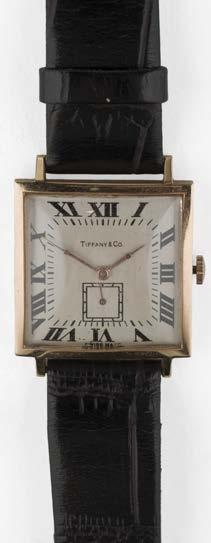
689* Tiffany & Co. An art deco square-form tank watch by Tiffany & Co., circa 1940, the 18k gold case stamped 0.750, the silver dial with black Roman numerals and second subsidiary dial, 15 jewels movement, case size 3 cm including crown, with black leather strap, worn (1)
£400 - £600
Lot 686
Lot 687
Lot 688
690* Bowl. A silver quaich bowl by Asprey & Co Ltd, London, 1987, of traditional quaich form with twin outstretched handles, the body hand-hammered throughout and raised on a circular foot, 18.5 cm across, 298g (1)
£200 - £300
691* Bowl. An Imperial Russian silver Cloisonné bowl, circa 1908, of rounded form raised on a short circular foot, highly decorated with cloisonné enamels, scrolling foliage and stylised flowerheads against a stippled ground, within geometric borders, gilt interior slightly worn, Moscow 84 zolotnik silver standard mark and maker’s initials ‘АН’ marked to base, 6.5 cm high, gross weight 185g (1)
£600 - £800
692* Candelabras. A pair of silver-plated three-light candelabras, circa 1900, each of traditional form, with a stepped circular base rising to a tapering baluster stem, supporting a central sconce flanked by two scroll arms, beaded rims to each drip pan, unmarked, 44.5 cm high (2)
£150 - £200
693* Candlesticks. A set of 4 Victorian silver candlesticks by Henry Wilkinson & Co., Sheffield, 1845, of ornate rococo revival form, the shaped square base, with scroll and shell decoration, engraved with family crest rising to a baluster and knopped stem with acanthus leaf embellishment, detachable foliate-edged drip pan, worn and rubbed, 23 cm high, weighted (4)
£200 - £300
694* Coffee pot. An early 20th century Turkish/ Islamic Dallah coffee pot, of baluster form, relief decorated with scenes of camels and foliate and hinged lid, 15 cm high, 157g (1)
£70 - £100
Lot 692
695* Condiment set. An Edwardian silver condiment set by Goldsmiths & Silversmiths Co Ltd, London, 1904, comprising of 5 oval salt and mustard pots, one with handle and cover, two cylindrical pepperettes, and 4 matching spoons and 1 unmatched, each piece of neoclassical urn form with openwork bodies draped with festoons, raised on spreading circular pedestals, each with blue glass liner, the spoons with shell-shaped bowls and tapering handles, housed in the original fitted case (1)
£300 - £400
696* Flatware. A collection of silver flatware, including 4 dessert forks by Richard Crossley, London, 1799, 5 dessert forks by Thomas Northcote & George Bourne, London, 1794, 11 teaspoons by Wakely & Wheeler, London, 1925 and other silver flatware, total weight approximately 756g (qty)
£500 - £700
697* Forks. A collection of 12 silver forks, including 4 George IV dinner forks by John, Henry & Charles Lias, London 1828, 5 dessert forks by Chawner & Co (George William Adams), London 1853, a pair by William Rawlings Sobey, Exeter, 1848 and 1 other fork, total weight approximately 652g (12)
£300 - £400
698* Forks. A collection of George III silver dinner forks by Richard Crossley, London, 1796, of fiddle pattern form, total weight approximately 853g (12)
£500 - £700
699* Hamlet. A Victorian silver maquette modelled as Shakespeare’s Hamlet by Mortimer & Hunt, London 1840, modelled standing in a distinctive hat and robes holding a skull, the stepped circular base engraved ‘Alas poor Yorrick!’, the lower base additionally engraved ‘To John Forbes Robertson From Squire Bancroft 1897’, stamped ‘Mortimer & Hunt’, base assayed, 20 cm high, 625.5g
Provenance: Sir Johnston Forbes-Robertson (1857-1937). English actor and theatrical impresario who George Bernard Shaw and other critics considered to be the finest Hamlet of his generation.
Sir Squire Bancroft (1841-1926) was an English actor-manager, born Squire White Butterfield, he changed his name to Squire Bancroft Bancroft by deed poll just before his marriage. Both he and his wife Effie are considered to have instigated a new form of drama known as 'drawing-room comedy' or 'cup and saucer drama' owing the realism on their stage sets. (1)
£700 - £1,000
700* Humidor. A substantial Victorian silver humidor by A.J. Zimmerman Ltd, Birmingham 1899, of rounded rectangular plain form, engraved to the front ‘Licensed Victuallers Golfing Society E. J. Lambert 1929-1954’, the hinged lid opening to reveal a cedar wood lined interior with moveable partitions, 9 cm high, 30 cm wide, 17.5 cm deep, gross weight (including lining) 2800g (1)
£800 - £1,200
701* Mirror. A Victorian silver mirror by Henry Matthews, Chester, 1900, the easel-backed frame with a floral repoussé design with a central vacant cartouche surrounding the bevelled glass mirror, 36 x 28 cm (1)
£100 - £150
702* Mixed silver. Various silver, including a Victorian silver cream jug by Stokes & Ireland Ltd (William Henry Stokes & Arthur George Ireland), Chester, 1897, of baluster form with a scalloped rim and acanthus capped scroll handle, the body richly embossed with repoussé foliate and scroll decoration in high relief, raised on a circular foot chased with matching motif, 10 cm high, 90g, a pair of George III silver ladles by William Eley I, William Fearn & William Chawner, London, 1810, Onslow pattern, 17.5 cm long, 105g and other items, gross weight approximately 410g (9)
£200 - £300
703* Mixed silver. Various silver, including a Victorian silver sugar caster by Goldsmiths & Silversmiths Co (William Gibson & John Lawrence Langman), London, 1891, of lighthouse form, pierced dome cover and spiralled fluted body, hallmarks worn, 17 cm high, 176g, together with an Edwardian silver wine taster by Liberty & Co Ltd, Birmingham, 1906, of plain form with twin tail handles, 9.5 cm diameter, 77g, plus a pair of Victiorian silver table spoons by Chawner & Co (George William Adams), London, 1853, 208g and other items approximate total weight 715g (10)
£300 - £400
704* Mixed silver. A novelty silver toby jug by T.W. Birmingham 1913, of typical form with rope twist handle and stamped with registration number 579667, 7 cm high, together with a christening mug, various spoons, forks, napkin rings and other silver items, weighable silver approximately 810g (gross) (a shoe box)
£400 - £600
705* Mixed silver. A pair of Continental silver pepperettes, circa 1900, modelled as a boy and girl, stamped ‘800’, 9.5 cm high, 168g, together with a silver capstan inkwell by Walker & Hall, Sheffield, 1938, 15 cm diameter, weighted, a silver wall pocket by George Nathan and Ridley Hayes, Chester 1901, cast and embossed with figural genre, 15 cm long, 73.5g, a silver perfume bottle Samson & Morden, London 1882, engraved with girls sitting on a fence by a house, with glass stopper and some small dents, 5.5 cm high and other items (10)
£200 - £300
706* Mixed silver. A set of 6 teaspoons by I.S. Greenberg & Co (Israel Sigmund Greenberg), Sheffield 1909, together with a set of 6 Edwardian silver teaspoons by Josiah Piercy II, London, 1863, plus a large collection of silver spoons, mostly tea and dessert spoons, gross weight approximately 860g (small box)
£400 - £600
707* Mixed silver. A Victorian silver vesta case by George Unite & Sons, Birmingham, 1864, textured exterior, monogrammed cartouche and gilded interior, 6.5 cm, 64g, plus other items including picture frames, ring boxes and novelties. (small box)
£100 - £150
708* Mixed silver. A small collection of mixed silver items, including a silver bangle by Joseph Smith & Sons (Birmingham) Ltd, Chester, 1939, top half engraved with scrolling foliate, slightly dented, A silver cigarette case by John Rose, Birmingham, 1913, with central cartouche surrounded by engraved foliate, case bent and misshaped, plus other items, total approximate weight 223g (10)
£80 - £120
709* Mixed silver. A small collection of silver and silver plated items, including a silver christening cup by Goldsmiths & Silversmiths Co Ltd, London, 1925, lower portion of the cup with embossed leaf decoration, acanthus capped scroll handle on pedestal foot, 8.5 cm high, 144g, a pair of silver bud vases/candle holder by Cornelius Desormeaux Saunders & James Francis Hollings (Frank) Shepherd, Sheffield, 1910, weighted, plus some silver plated items (6)
£80 - £120
710* Mixed silver. Various silver including a Victorian silver punch bowl by Charles Boyton (II), London, 1897, with a gadrooned body on pedestal foot, 13.5 cm diameter, 8.5cm high, 222g, a George III silver cream jug by Thomas Shepherd[?], London, 1773, with a floral decoration and acanthus capped scroll handle, on pedestal foot, tarnished, 11.5 cm high, 82g, plus other items, gross weight approximately 475g (5)
£200 - £300
£300 - £400
711* Salver. A George V silver salver by Carrington & Co, London, 1926, shaped edge, a monogram to centre and raised on four knurl feet, 25.5 cm diameter, 625g (1)
712* Salver. A George V silver salver by Carrington & Co, London, 1927, with a shaped edge and monogram to centre, on four knurl feet, 30.8 cm diameter, 947g (1)
£400 - £600
713* Salver. A George V silver salver by S Blanckensee & Son Ltd, Chester, 1934, of shaped square form, on four knurl feet, 22.8 cm diameter, 559g (1)
£300 - £400
714* Salver. A George VI silver salver by S Blanckensee & Son Ltd, Birmingham, 1937, of shaped square form, on four knurl feet, 19 cm diameter, 387g (1)
£150 - £200
715* Salvers. A William IV silver footed salver by Robert Garrard II, London 1831, the ribbed body and engraved scalloped edge on circular foot, 15.5 cm diameter, 250g, together with a slightly larger footed silver salver by Robert Garrard II, London 1839, with ribbed body and engraved scalloped edge on circular foot, 17.3 cm diameter, 326g (2)
£200 - £300
716* Sauce boats. A set of 4 silver sauce boats by F.A.F & co, Sheffield, 1928, of traditional oval form, scrolling acanthus capped handles and beaded rim, on 3 feet, 15 cm long, total weight approximately 530g (4)
£300 - £400
717* Silver medal. East Midland Brick Association silver medal by Stanley G Morris, Birmingham 1954, the large oval medal with four shields with the letters D L L N on a gilt brick ground, with oval border inscribed ‘Chairman, East Midlands Brick Association’, 8 x 6.5 cm, with silver suspension, mounted on a red ribbon with 10 gilt metal bars engraved with names of past chairmans from 1941 to 1974, presented in a fitted case, approximately 132g (1)
£150 - £200
718* Smokerama. A pair of silver desk clip ashtrays by Hukin & Heath, London 1906, retailed by Kirby Beard & Co, each with a circular ashtray (both mishapen) and raised cigarette holder, a sprung clip (both in good working order, 15 cm long, 230g, together with a table lighter and ashtray by Goldsmiths & Co, London 1910, 14 cm across, 125g, plus a silver plated table lighter and other items (6)
£200 - £300
cm long, 165g
£100 - £150
722* Spoons. A collection of Victorian silver table spoons, by C
& Sons Ltd, London, 1905, of plain form with monograms to handles, total weight approximately 770g
£500 -
720* Spoons. A collection of George III silver dessert spoons, by Richard Crossley, London, 1798, of plain form, total weight approximately 432g (12)
£200 - £300
721* Spoons. A collection of George III silver serving spoons, by Richard Crossley, London, 1800, of plain form, total weight approximately 769g (12)
£500 - £700
723* Spoons. A collection of Victorian silver table spoons, comprising 4 table spoons by Josiah Williams & Co (George Maudsley Jackson & David Landsborough Fullerton), London, 1897, of fiddle pattern form, monogram to handles, plus 3 Irish silver spoons and 1 other, total weight approximately 573g (8)
£300 - £400
724* Spoons. A mixed collection of silver spoons, including 3 serving spoons and 7 dessert spoons, various makers marks, and patterns, including Josiah Williams & Co (George Maudsley Jackson & David Landsborough Fullerton), Peter & William Bateman, Solomon Hougham, 479g (10)
£200 - £300
719* Soup Ladle. A George III silver soup ladle by unidentified maker, London, 1777, Onslow pattern, 34.5
(1)
S Harris
(24)
£700
725* Sugar Caster. A George II silver sugar caster by Thomas Bamford, London 1736, of baluster form with foliate pierced domed cover and urn finial, 17 cm high, 205g (1)
£100 - £150
726* Tankard. A George I silver tankard by William Darke, London, 1727, of plain form engraved monogram to body, with scroll handle on circular foot, some minor dents and marks, 177g (1)
£200 - £300
727* Teapot. A Victorian silver bachelor’s teapot by James Dixon & Sons, Sheffield, 1891, of oblong half gadroon form, fruitwood handle and finial, raised on ball feet, together with a matched silver milk jug and pedestal sugar bowl by George Unite, Birmingham 1880, each engraved with the Belcher family crest, the milk jug 9 cm high, the bowl 8.2 cm diameter, gross weight, 482g, plus a white metal miniature sauce boat, inset with a George II coin, raised on three cabriole supports, 12 cm long (4)
£300 - £400
730* Tumble cups. A pair of George III silver tumble cups by William Dempster, Edinburgh, 1761, of plain form, engraved with family crest of a dexter hand in fesse issuing from a cloud in sinister and holding a quill pen, occasional minor dings and dents, 6 cm high, 261g
The family crest is likely a representative of the Smith family of Dirleton, Haddingtonshire, Scotland.
(2)
£400 - £600
728* Teapot. A Victorian silver teapot by John, Edward, Walter & John Barnard, London, 1875, of shaped octagonal form, the body richly engraved with scrolling foliate garlands, monogrammed cartouche to one side vacant the other, the hinged cover surmounted by a finial, straight tapering spout and fruitwood looped handle, 27.5 cm long, 16 cm high, gross weight 656g (1)
729* Tiffany & Co. A part Tiffany & Co silver gilt desk set number 4838, comprising a pair of square inkwells, each with a hinged cover engraved with the initials ‘M.G.E. enclosing a glass ink pot, the base stamped ‘Tiffany & Co Makers, Sterling Silver 925-1000 m 4838’, 8 cm high x 8.5 cm square, together with a pair of pen tray, each engraved with the same initials, 20.5 cm long, combined weight approximately 1300g (including glass liners), the gilding is worn throughout
Provenance: Gertrude Forbes-Robertson nee Elliott (1874-1950).
£150 - £200
731* Vase. A Victorian Aesthetic sterling silver vase, of elongated form with relief butterflies and anchors with ivy leaves, stamped ‘Sterling’ and with Birmingham import marks (worn), 15 cm high, 93g (1)
£100 - £150
Gertrude Elliott (1874-1950) was an American stage actress who met the artist and actor Johnston Forbes-Robertson when her theatre company travelled to London in 1899. In 1900 they were married, and often appeared together on stage, particularly in Shakespearean roles. In 1908 Gertrude was a founding member of the Actresses' Franchise League, and in 1913 Johnston was knighted, making Gertrude 'Lady Forbes-Robertson'. (4)
£700 - £1,000
735* Gold comb. An art deco 9ct gold sliding comb, the rectangular gold case applied with the initials ‘E.L.B.’, stamped ‘9ct PAT. 250885’, with faux tortoiseshell comb, some teeth missing, gross weight (including comb) 21.4g (1)
£200 - £300
732* Amber necklace. An amber bead necklace, set with 26 beads, length 50cm, approx 60g. (1)
£100 - £150
736* Pendant. A miniature Russian Faberge-style yellow metalmounted enamel egg pendant, decorated with green and white enamels, the suspension loop marked ‘960’, 2 cm high, 6.4g gross weight (1)
£150 - £200
733* Brooch. A fine 15ct gold and enamel brooch, early 20th Century, of oval form, depicting a finely modelled and enamelled pheasant in flight above a pastoral landscape with three green enamel trees and grassy foreground, mounted in 15ct gold brooch with safety chain and pin, in fitted case 4.5 cm wide, gross weight 4.6g (1)
£250 - £350
734* Colonial jewellery. An Indian diamond and silver foliate pin brooch, 19th century, set with rose-cut diamonds, the central stone approx. 7 mm across (cracked) with a further 21 smaller diamonds, 8 cm long, together with two similar pieces, including one with an articulated head (3)
£300 - £500
737* Pocket watch. An 18ct gold open face pocket watch, the white enamel dial with roman numerals, blued steel hands and seconds dial, the outercase engraved ‘J.Y., 1896. J.F.Y., 1918’, with inner back cover enclosing the movement, stamped ‘18ct’, 50 mm diameter, gross weight (including movement), 116.5g, working (1)
£1,500 - £2,000
738* Ring. A Georgian or later diamond cluster ring, with a central rose cut diamond approx. 5 mm across, surrounded by 10 smaller diamonds, yellow metal close back, size G, gross weight 5.3g (1)
£200 - £300
739* Ring. A white and yellow metal diamond ring, set with 3 crossover brilliant cut stones each approximately 0.20ct, size Q, in a red leatherette ring box (1)
£200 - £400
740* Stick pins. A Victorian yellow metal stick pin, with ornate acanthus top inset with a cut amethyst, with a seal mark (probably Indian), 10.5 cm long, together with another, inset with a pearl, 10 cm long and other items including a George V silver and enamel vesta and cigarette case, London 1913, cigarette case measuring 7.5 cm, vesta 4 cm (two silver items 84g) (6)
£200 - £300
741* Watch chain. A 9ct rose gold Albert watch chain, with T-bar and lobster claw catches, 38 cm long, 47g (1)
£1,000 - £1,500


















